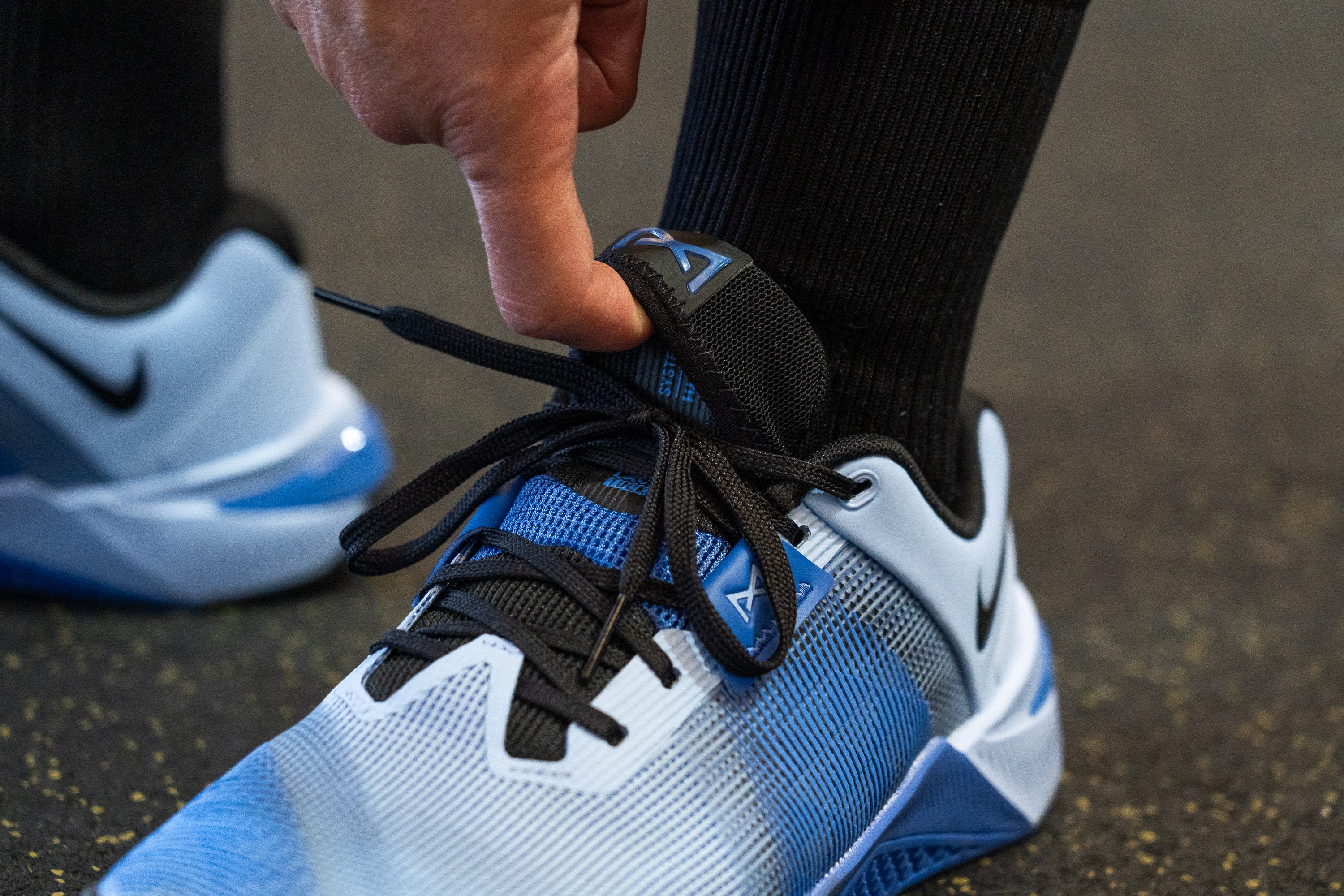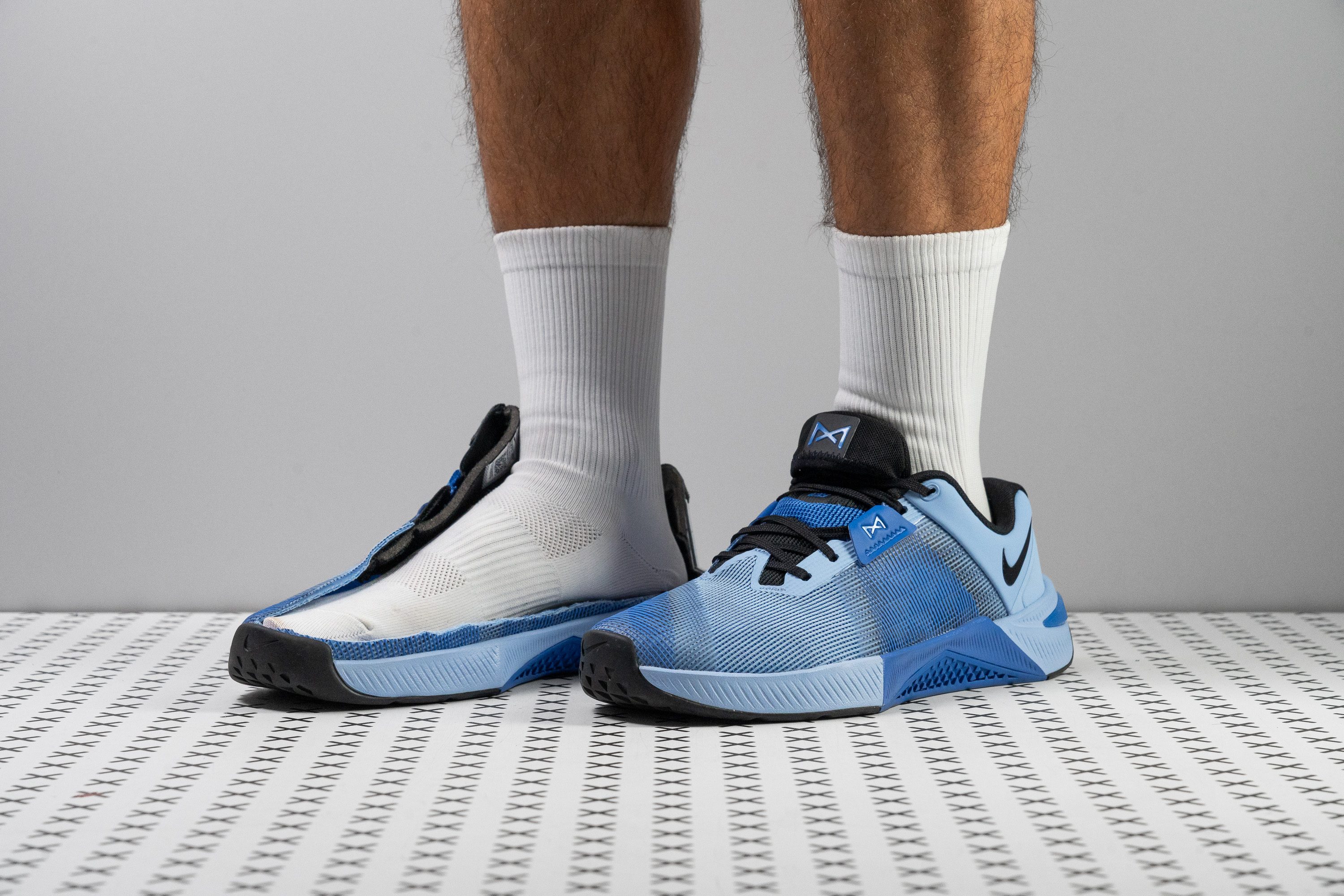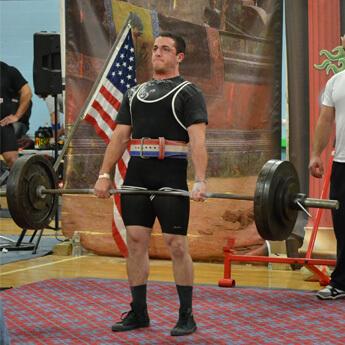Our verdict
- Top pick in best gym shoes
- Top pick in best weightlifting shoes
Pros
- More versatile Metcon overall
- One of the lightest Metcons ever!
- ReactX adds shock absorption and energy return
- Increased forefoot flexibility
- Still amazingly stable for weightlifting
- Fantastic upper durability (even for rope climbs)
- Great grip on gym floors
- Highly secure foot lockdown
- Accommodating fit and toebox
- Handy Lace Tuck
Cons
- Outsole could be more durable
- Upper lacks breathability
Audience verdict
- Top 16% in Nike training shoes
- Top 10% most popular training shoes
Comparison
The most similar training shoes compared
+ + Add a shoe | |||||
|---|---|---|---|---|---|
| Audience score | 88 Great! | 91 Great! | 82 Good! | 82 Good! | |
| Price | $155 | $140 | $150 | $150 | |
| Use | CrossfitWorkoutCross-trainingGymHIIT | CrossfitWorkoutCross-trainingGymHIITJumping rope | CrossfitWorkoutCross-trainingGymHIITAll sports | CrossfitWorkoutCross-trainingGymHIITJumping rope | |
| Shock absorption | Low | Moderate | Moderate | Low | |
| Energy return | High | Moderate | High | High | |
| Traction | Moderate | Low | High | Moderate | |
| Drop lab | 6.6 mm | 6.4 mm | 7.9 mm | 7.7 mm | |
| Heel stack lab | 22.8 mm | 24.1 mm | 25.6 mm | 22.9 mm | |
| Forefoot | 16.2 mm | 17.7 mm | 17.7 mm | 15.2 mm | |
| Weight lab | 11 oz / 312g | 10.5 oz / 298g | 12.5 oz / 353g | 12.1 oz / 342g | |
| Lightweight | ✗ | ✓ | ✗ | ✗ | |
| Breathability | Warm | Moderate | Warm | Breathable | |
| Width / fit | Wide | Wide | Narrow | Medium | |
| Toebox width | Medium | Wide | Wide | Medium | |
| Size | Slightly small | - | True to size | True to size | |
| Midsole softness | Soft | Firm | Balanced | Balanced | |
| Stiffness | Moderate | Moderate | Moderate | Moderate | |
| Torsional rigidity | Stiff | Stiff | Moderate | Flexible | |
| Heel counter stiffness | Stiff | Flexible | Moderate | Moderate | |
| Toebox durability | Good | Bad | Good | Bad | |
| Heel padding durability | Good | Decent | Good | Decent | |
| Outsole durability | Decent | Good | Decent | - | |
| Midsole width - forefoot | Wide | Average | Average | Average | |
| Midsole width - heel | Average | Average | Average | Average | |
| Widths available | Normal | NormalWide | Normal | Normal | |
| Insole thickness | Average | Very thick | Average | ||
| Outsole thickness | Average | Average | Average | Thick | |
| Outsole hardness | - | - | Hard | Average | |
| Heel tab | None | None | Finger loop | None | |
| Tongue: gusset type | Both sides (semi) | Both sides (full) | None | Both sides (full) | |
| Tongue padding | Average | Thick | Average | Very thin | |
| Ranking | #12 Top 37% | #7 Top 22% | #27 Bottom 18% | #26 Bottom 21% | |
| Popularity | #3 Top 10% | #15 Top 46% | #29 Bottom 12% | #20 Bottom 39% |
Who should buy
As Nike's flagship cross-training shoe, we believe that the Metcon 10 can be a perfect match for athletes who:
- are devoted to the Nike Metcon shoe series but wished for a lighter and more flexible option
- build their workouts around lifting and strength training, but also include some cardio and agility
- look for a durable trainer because they burn through gym shoes very quickly, or do rope climbs regularly
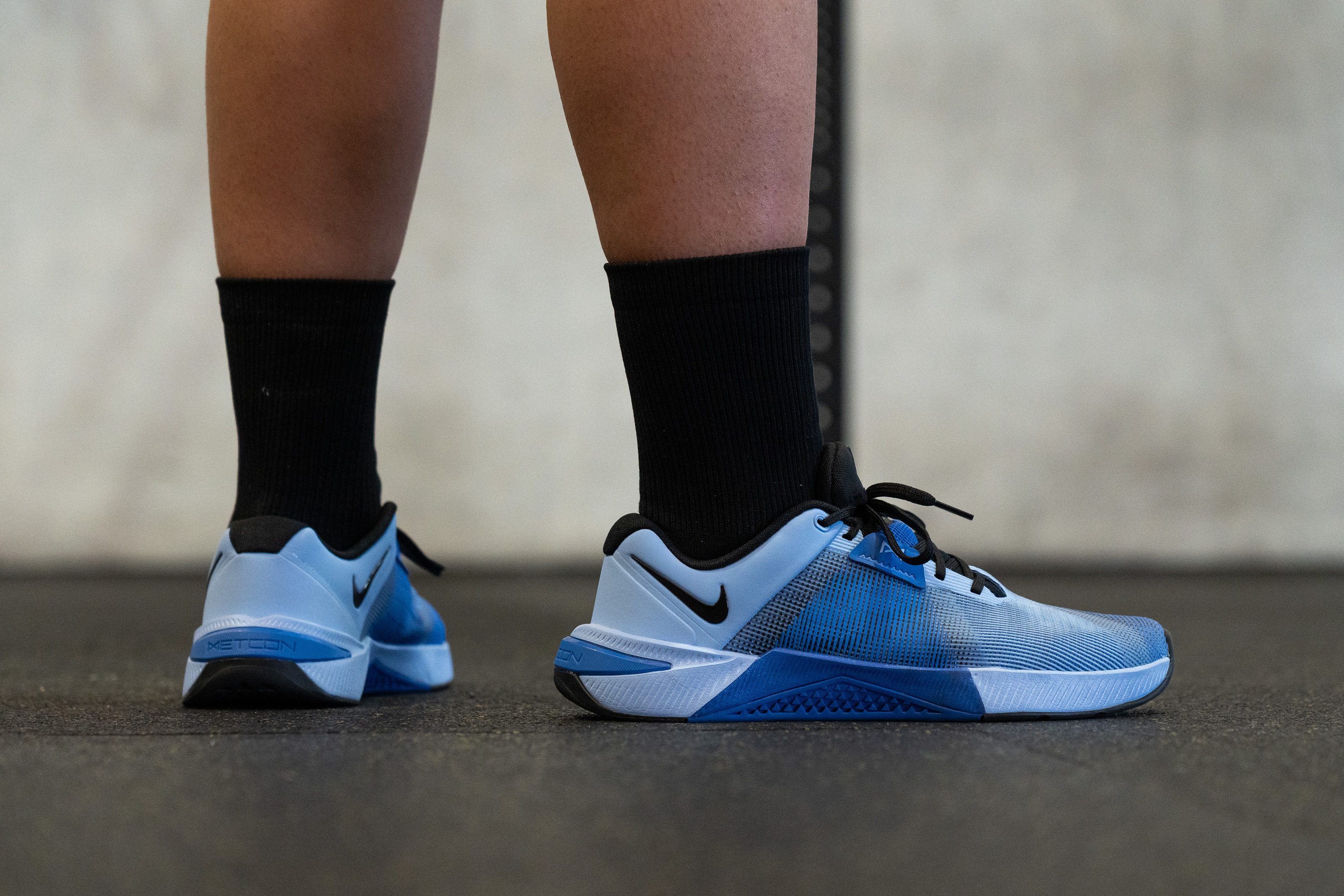
Who should NOT buy
If you don't lift 220 lbs (100 kg) or more in squats regularly, you may not need as much stability as the Nike Metcon 10 provides. The Nike Free Metcon 6 is a lighter, cheaper, and more breathable option that is better equipped for a little bit of everything at the gym.
Another excellent cross-trainer to consider if versatility is high up your priority list is the Reebok Nano X4.
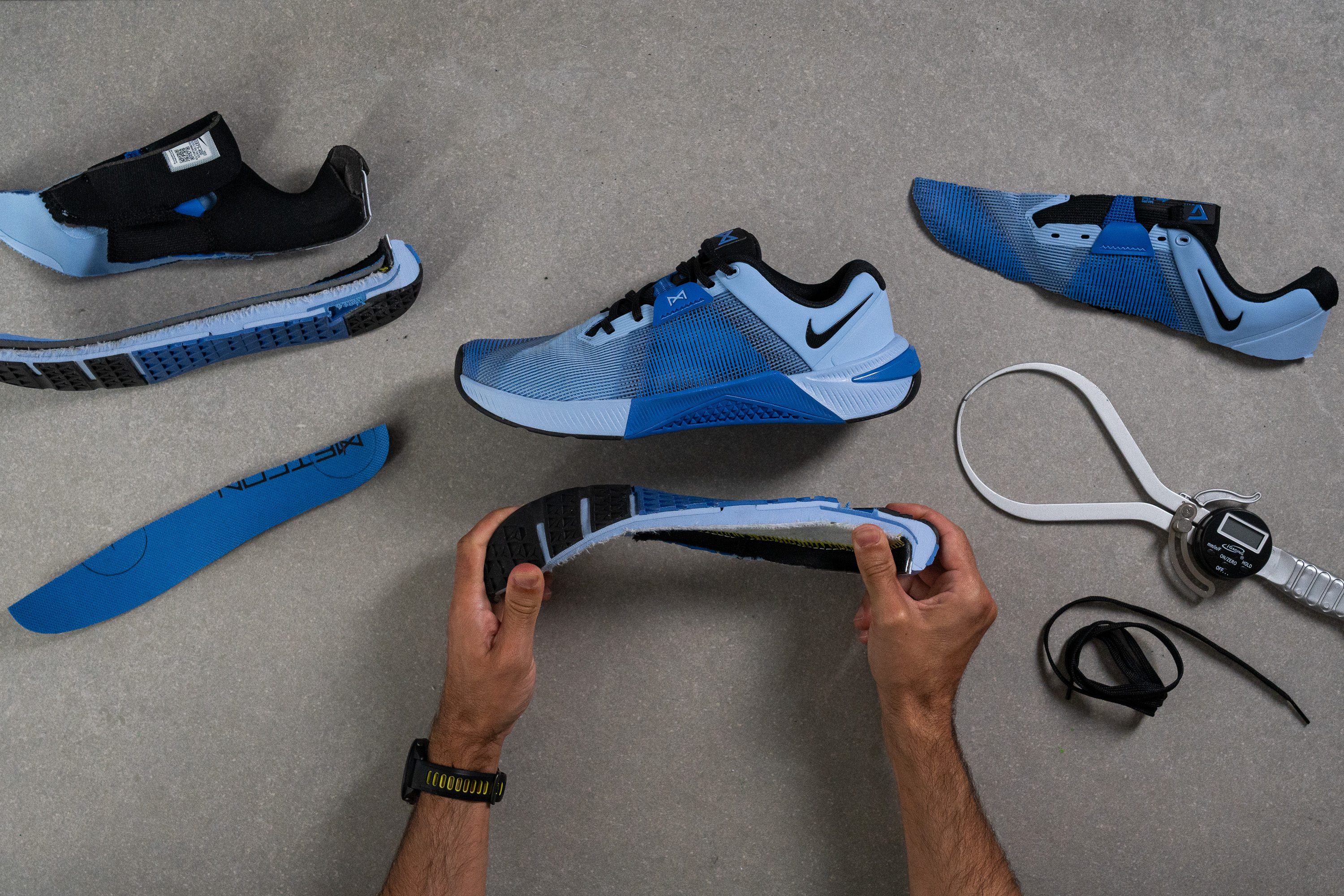
Cushioning
Shock absorption
If you've always wished for a touch more cushioning in a Nike Metcon, this iteration will answer your prayers! Introducing a new ReactX foam in the Metcon 10, Nike increased the shoe's shock absorption over the previous version quite tangibly.
Our machine recorded 76 SA in the heel and 60 SA in the forefoot, which are respectively higher than the 69 SA and 51 SA of the Metcon 9.
But please note that both measurements are still below the average, and we wouldn't recommend using this Nike trainer for an entire cardio session, running more than a mile, or long bouts of walking. With its overall sturdy build and a rigid Hyperlift plate in the heel, the Metcon 10 stays true to its lifting-biased design.
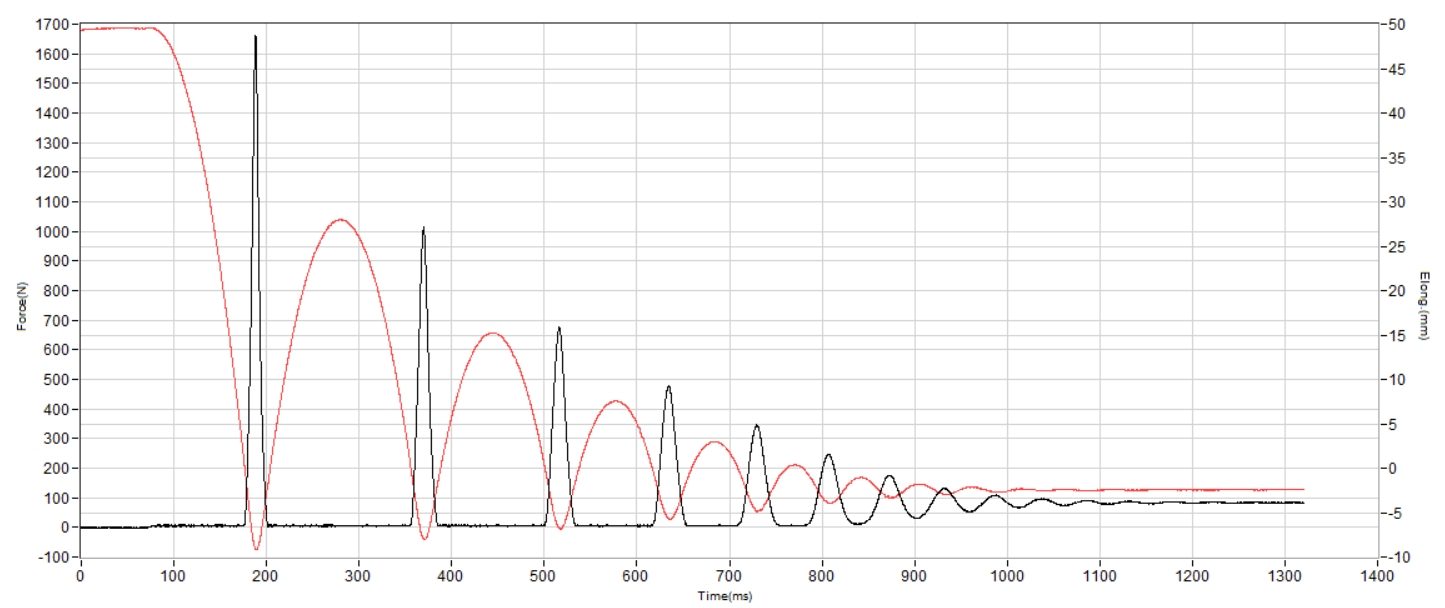
| Metcon 10 | 76 SA |
| Average | 81 SA |
Energy return
We are also pleased to confirm the brand's promise of 'increased energy return' with the introduction of the new ReactX foam.
The Metcon 10 got more responsive with a rebound of 63% in the heel and 61.2% in the forefoot, making jumps and agility drills more fun and effortless.
But please take it with a grain of salt as well, because it's not a proper cardio shoe.
| Metcon 10 | 63.0% |
| Average | 55.3% |
Heel stack
Measuring the shoe's platform thickness, we didn't notice any major differences compared to the previous Metcon. It is an equally low-profile and grounded cross-trainer.
Our caliper recorded a heel stack height of 22.8 mm, which is on the lower side of the training shoe spectrum.
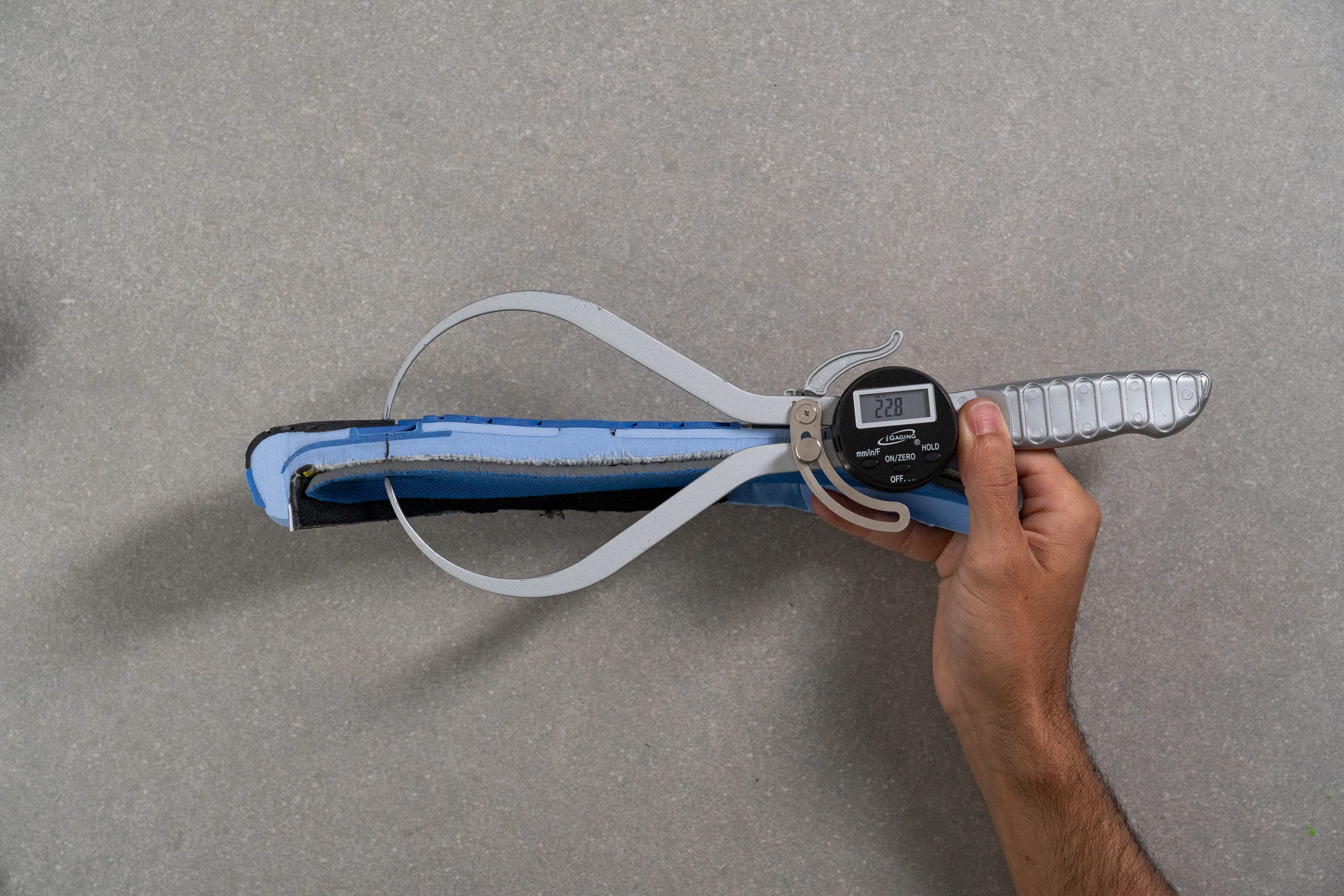
| Metcon 10 | 22.8 mm |
| Average | 24.6 mm |
Forefoot stack
And with a forefoot stack of 16.2 mm, the Metcon 10 keeps the toes close to the floor as well.
Pretty amazing how Nike managed to pack more impact protection into the new version without adding more millimeters to its stack height.
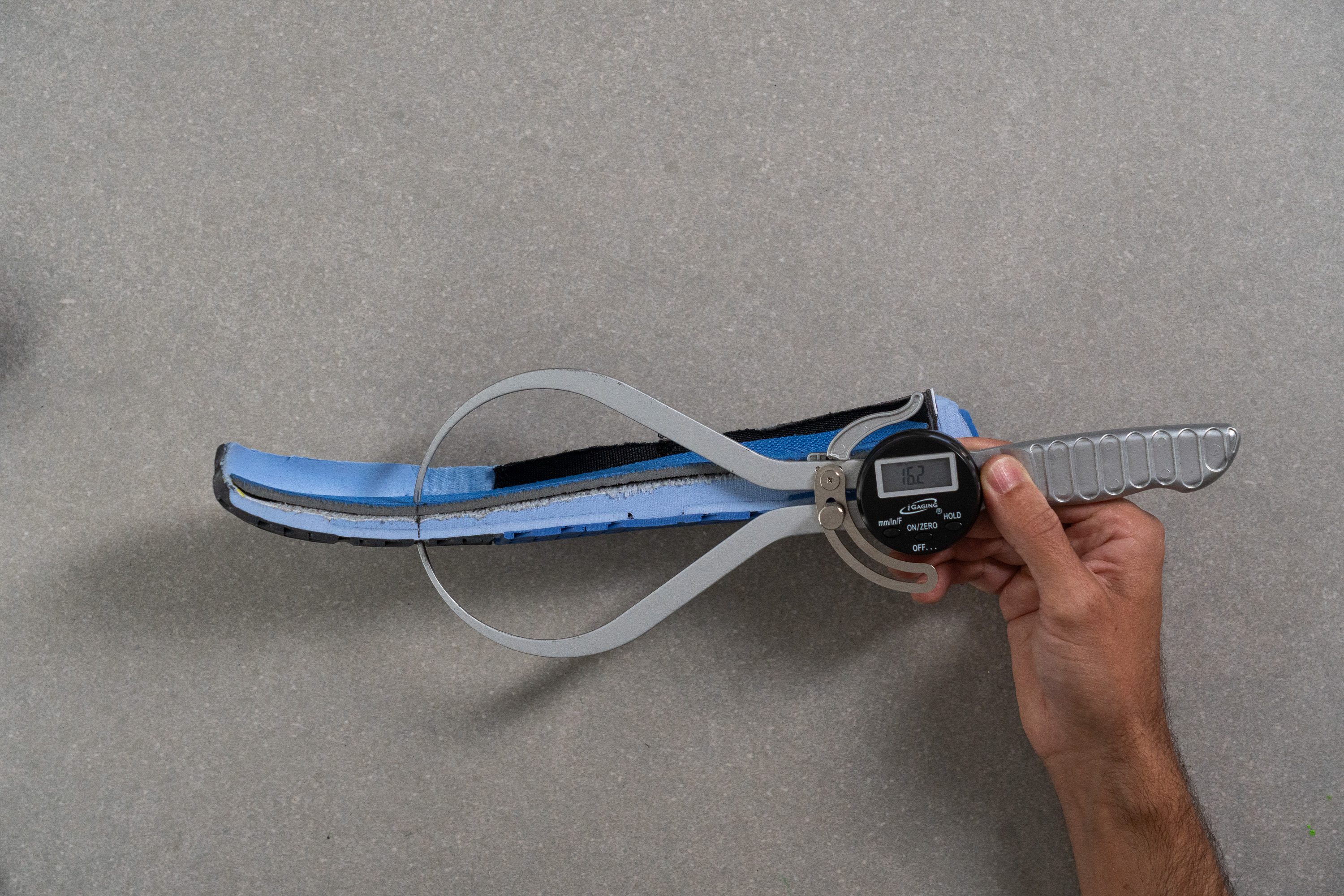
| Metcon 10 | 16.2 mm |
| Average | 18.2 mm |
Drop
At 6.6 mm, the shoe's heel-to-toe drop got a tad higher compared to the previous Metcons. But it is still on par with the current average of cross-strainers and feels like a grounded, low-drop trainer.
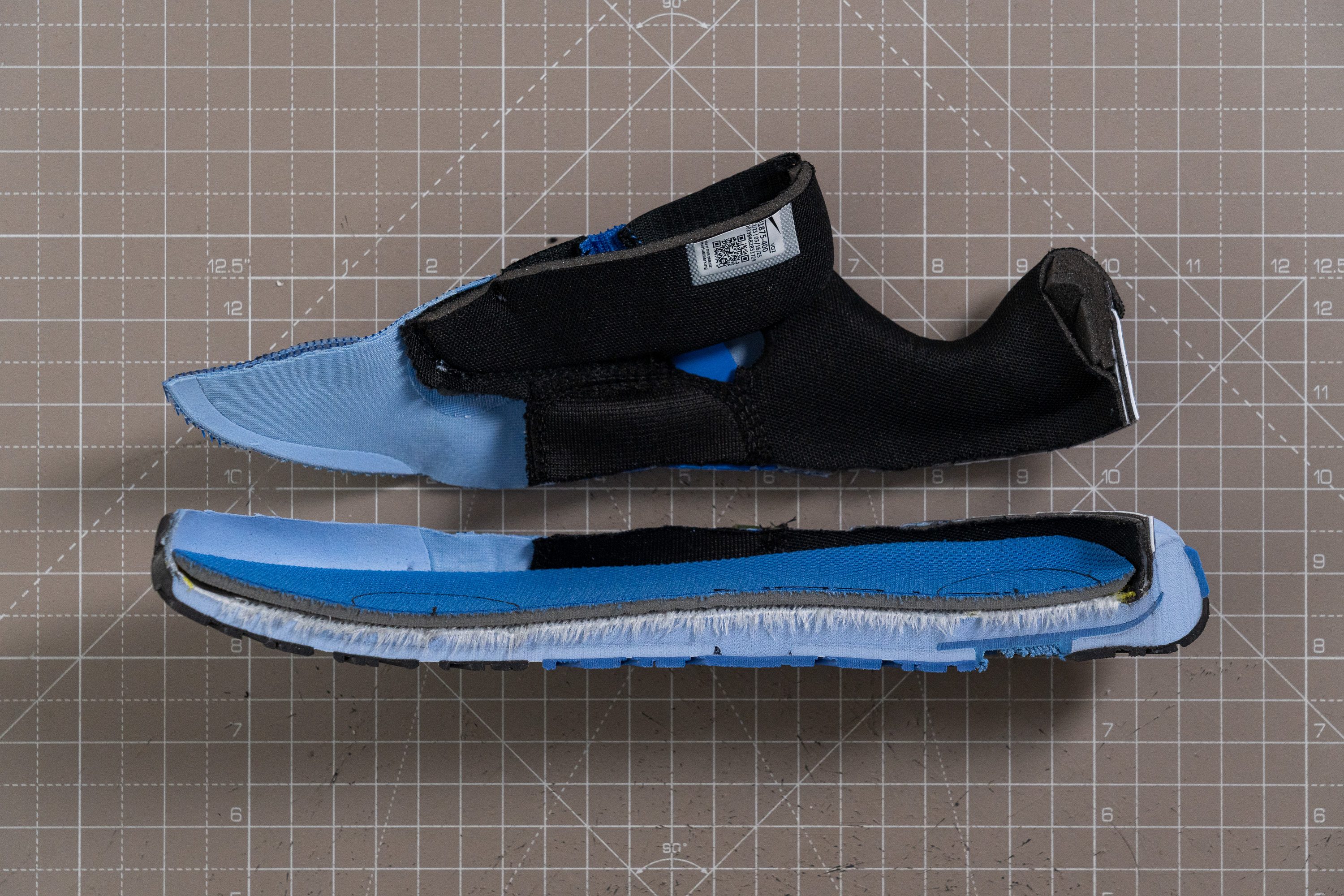
| Metcon 10 | 6.6 mm |
| Average | 6.3 mm |
Midsole softness
The Metcon 10 sees a huge drop in midsole firmness thanks to the ReactX foam.
Pressing our Shore A durometer against it, we recorded an exceptionally low reading of 19.5 HA, which is very unusual for this historically firm shoe series!
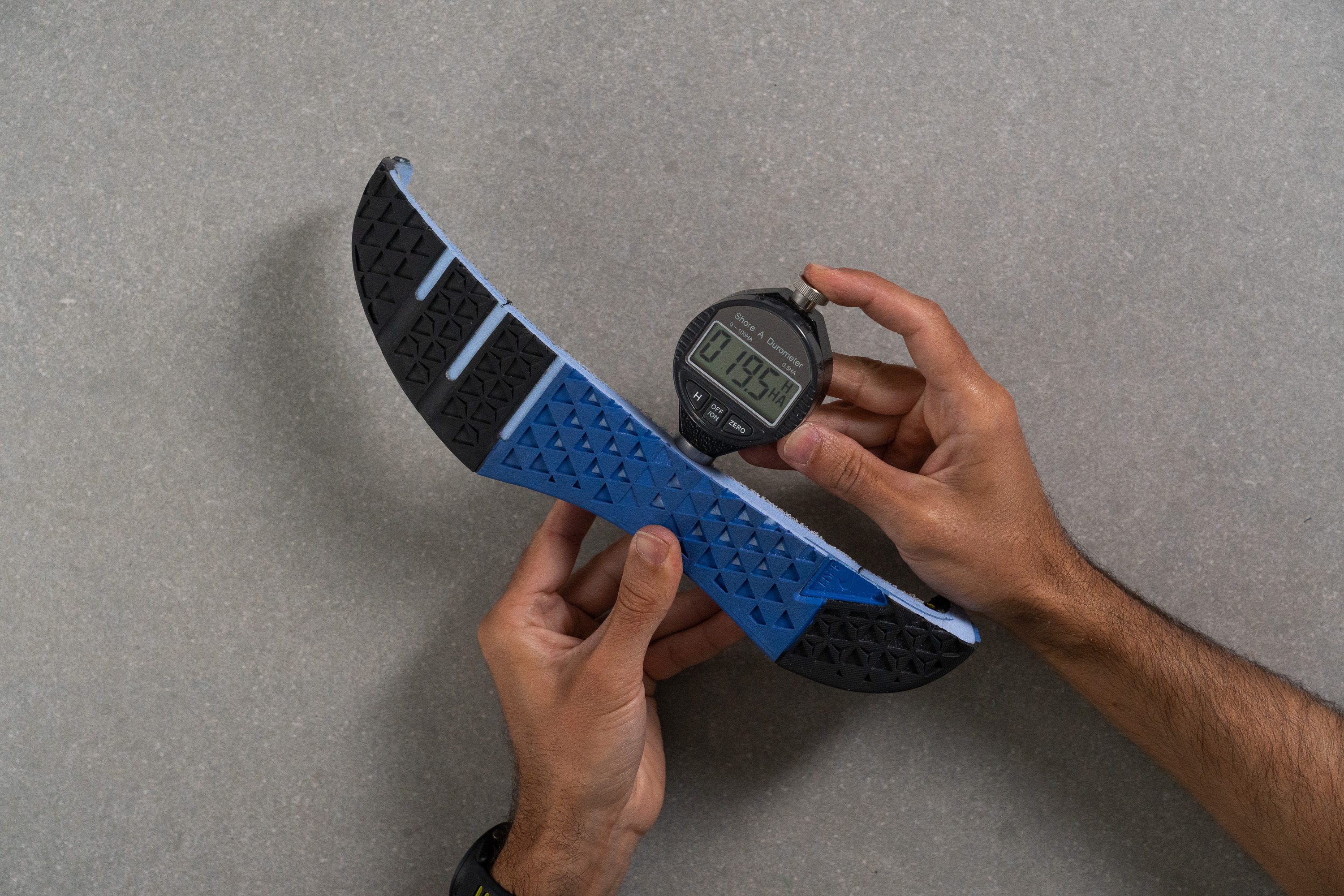
| Metcon 10 | 19.5 HA |
| Average | 27.8 HA |
Secondary foam softness
But don't worry about the wobbles because the soft compound is caged inside a firm carrier foam (29.5 HA) and is further stabilized by a stiff Hyperlift in the heel.
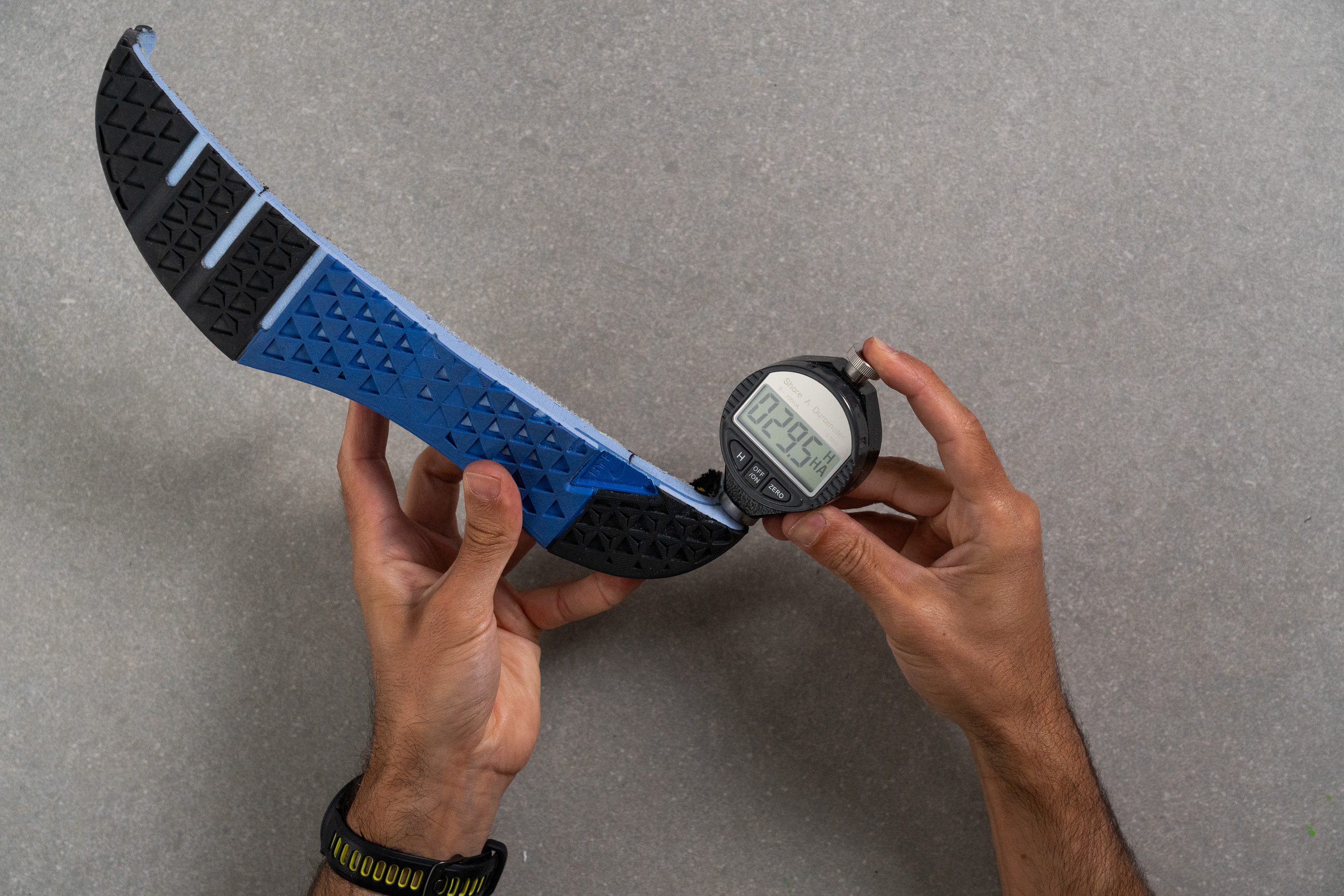
| Metcon 10 | 29.5 HA |
| Average | 37.2 HA |
Size and fit
Size
Nike Metcon 10 fits slightly small (57 votes).
Width / Fit
According to Nike, the Metcon 10 is supposed to have a wider toebox than its predecessor. But we weren't so sure about that, considering how much more streamlined the 10's upper looked visually.
That's where our gel molding process comes in handy.
Once the mold of the shoe's interiors solidified, we measured its widest part with a digital caliper. At 99.4 mm in the ball of the foot area, the Metcon 10 turned out to be just as wide as the 9. There is no added space here, but let's take a look at the front of the toebox.
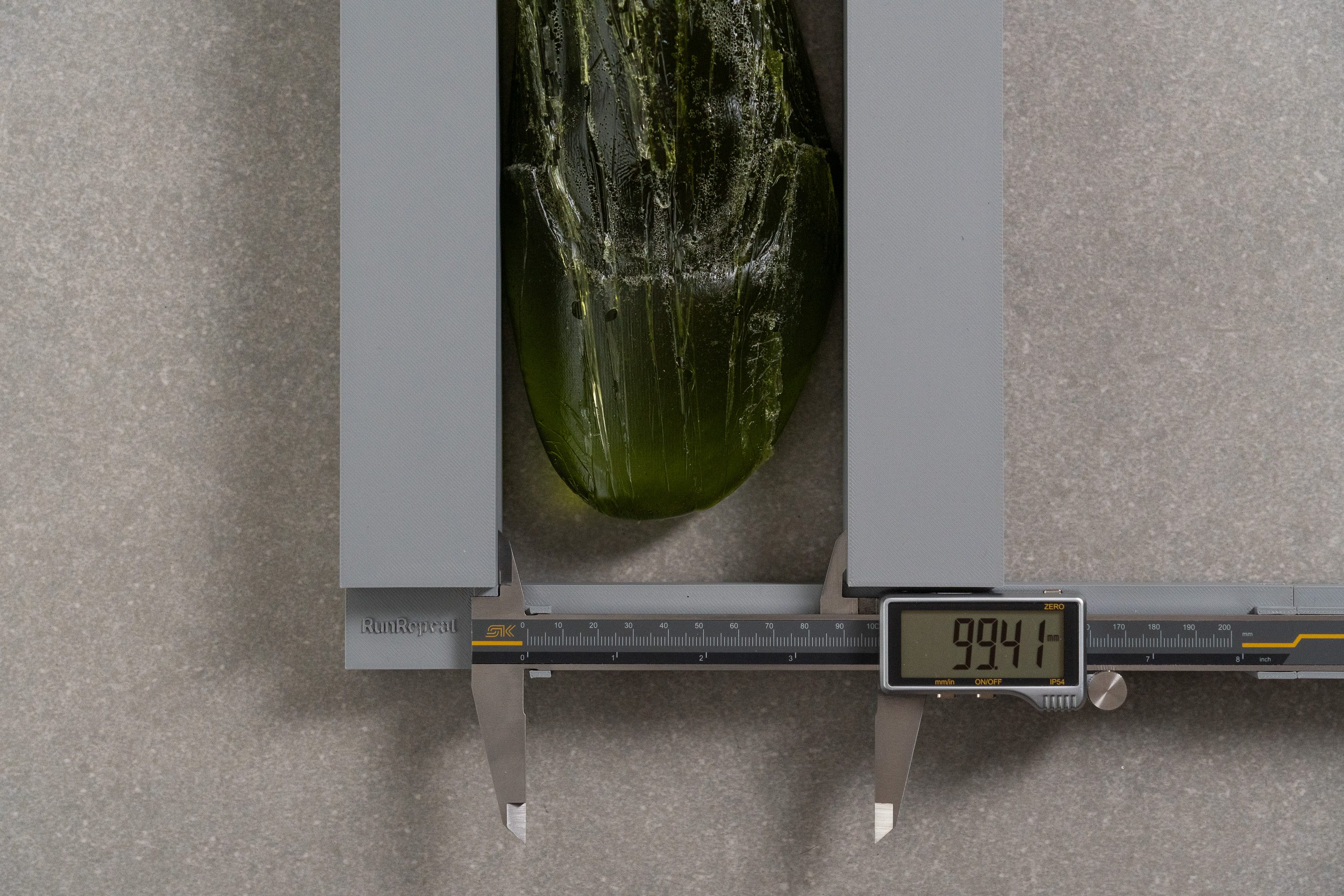
| Metcon 10 | 99.4 mm |
| Average | 97.4 mm |
Toebox width
Measuring the shoe's big toe area, we got just a standard width of 73.4 mm.
This means that the shoe is no wider than the Metcon 9 (74.4 mm) and is on par with the category average. It's not even in the wide range by our standards.
But on the bright side, athletes with medium-width feet are going to feel right at home in this Nike trainer. It provides sufficient room for toe splay, but if you need all the toe room you can get, try the Inov8 F-Lite Max.
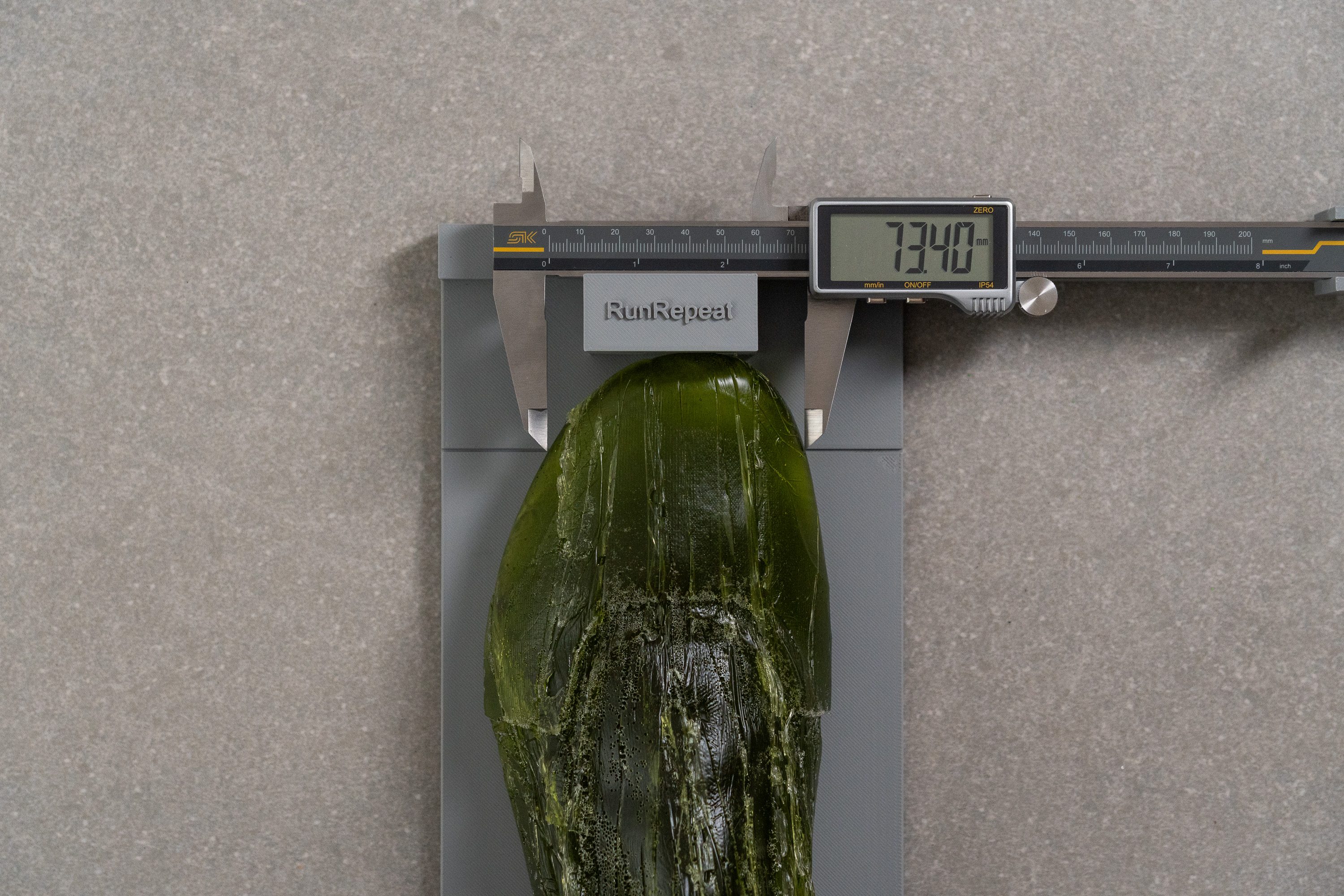
| Metcon 10 | 73.4 mm |
| Average | 73.8 mm |
Toebox height
There is no lack of vertical space in the Metcon 10 either.
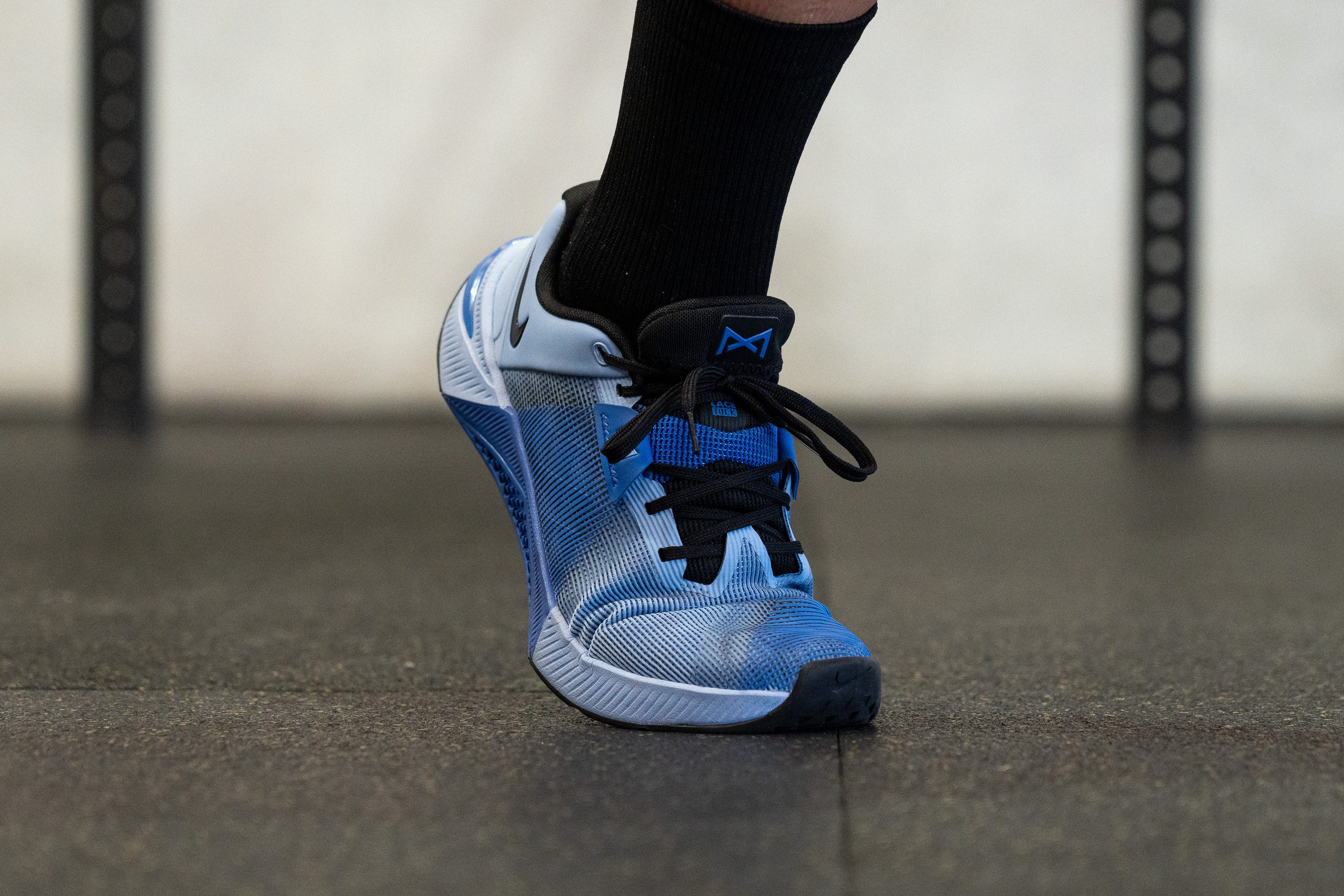
Measuring its toebox height, we got a solid reading of 27.1 mm, which is equal to the Metcon 9 and the category average. No potential danger for toes and toenails.
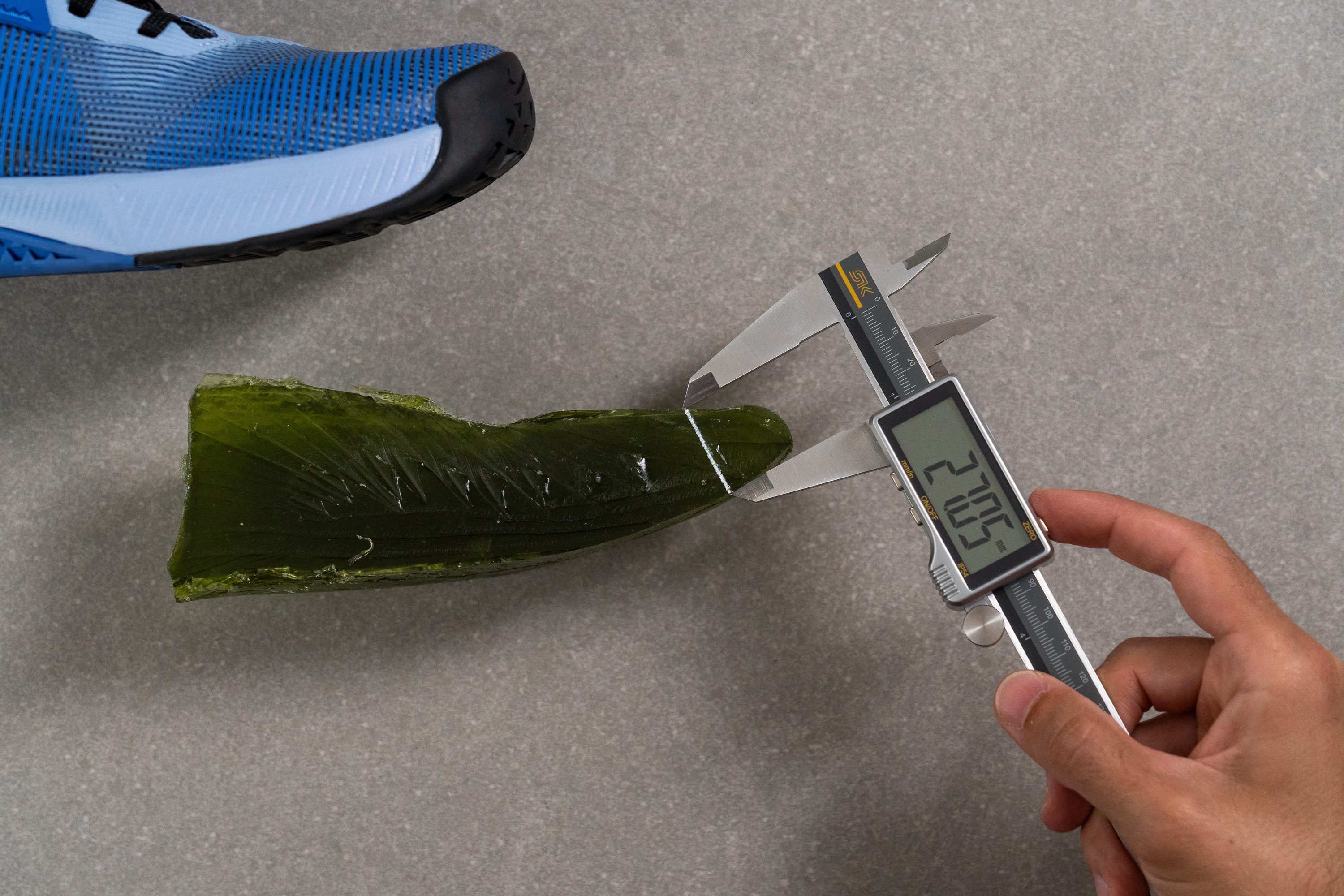
| Metcon 10 | 27.1 mm |
| Average | 27.4 mm |
Traction / Grip
Traction test
Nike employs two types of rubber for the Metcon 10's outsole: the grippier 004 Stick Rubber in the heel and forefoot, and the harder rubber blend in the midfoot for abrasion resistance during rope climbs.
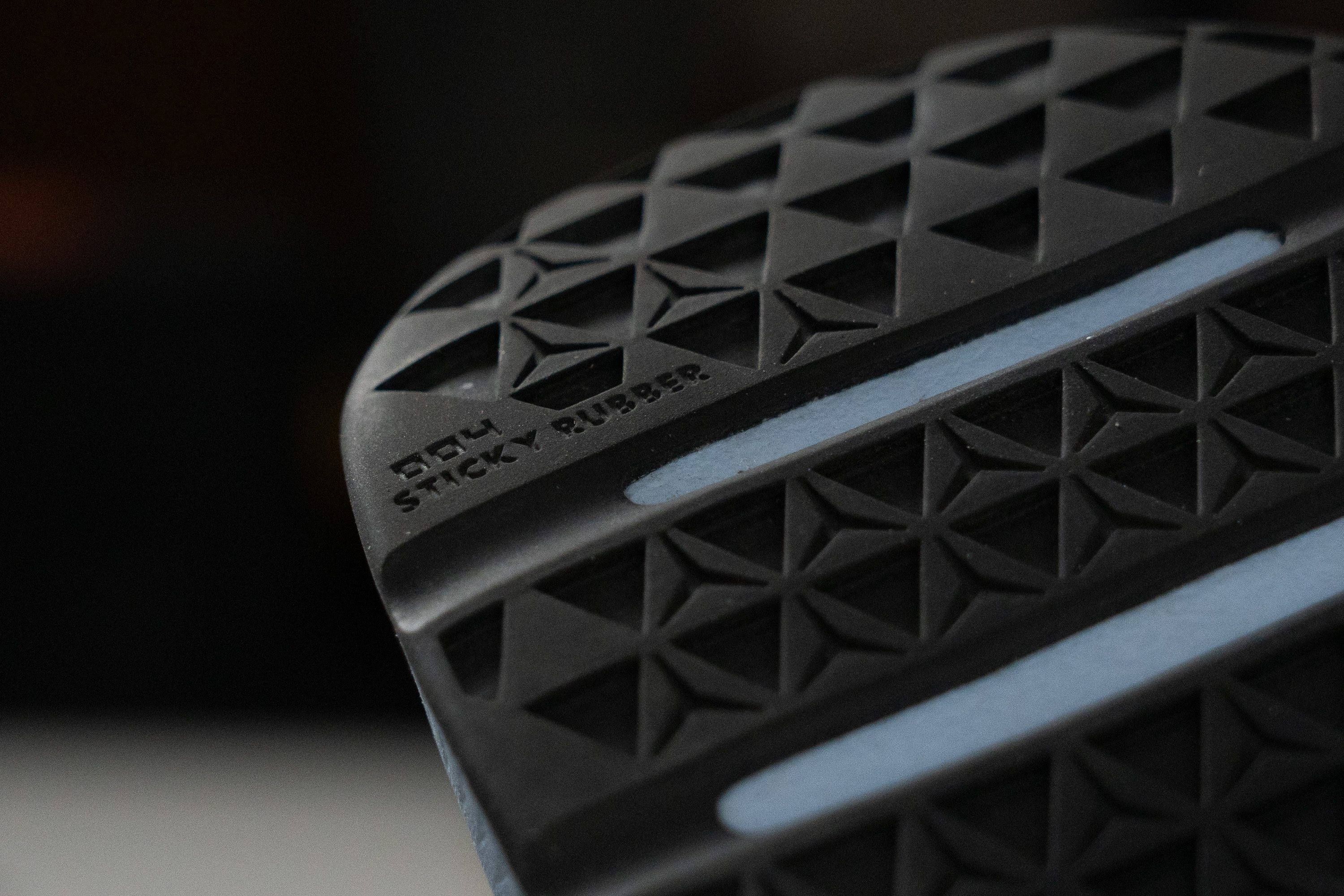
We focus on the forefoot traction when testing cross-training shoes, as that's where surefootedness matters the most in this type of exercise.
Sliding the Metcon 10's forefoot rubber against a wet surface at a consistent angle and force, we recorded an above-average friction coefficient of 0.38. This is a good result for a cross-trainer, even though we have tested even grippier trainers (Inov8 in particular).
| Metcon 10 | 0.38 |
| Average | 0.33 |
Outsole design
Nike made a complete outsole redesign for the Metcon 10, introducing two rubber blends and a triangular tread pattern. There is also a large triangular cutout under the Hyperlift in the heel.
The brand also added deep flex grooves in the forefoot, resulting in a significant increase in flexibility (one of the shoe's major updates).
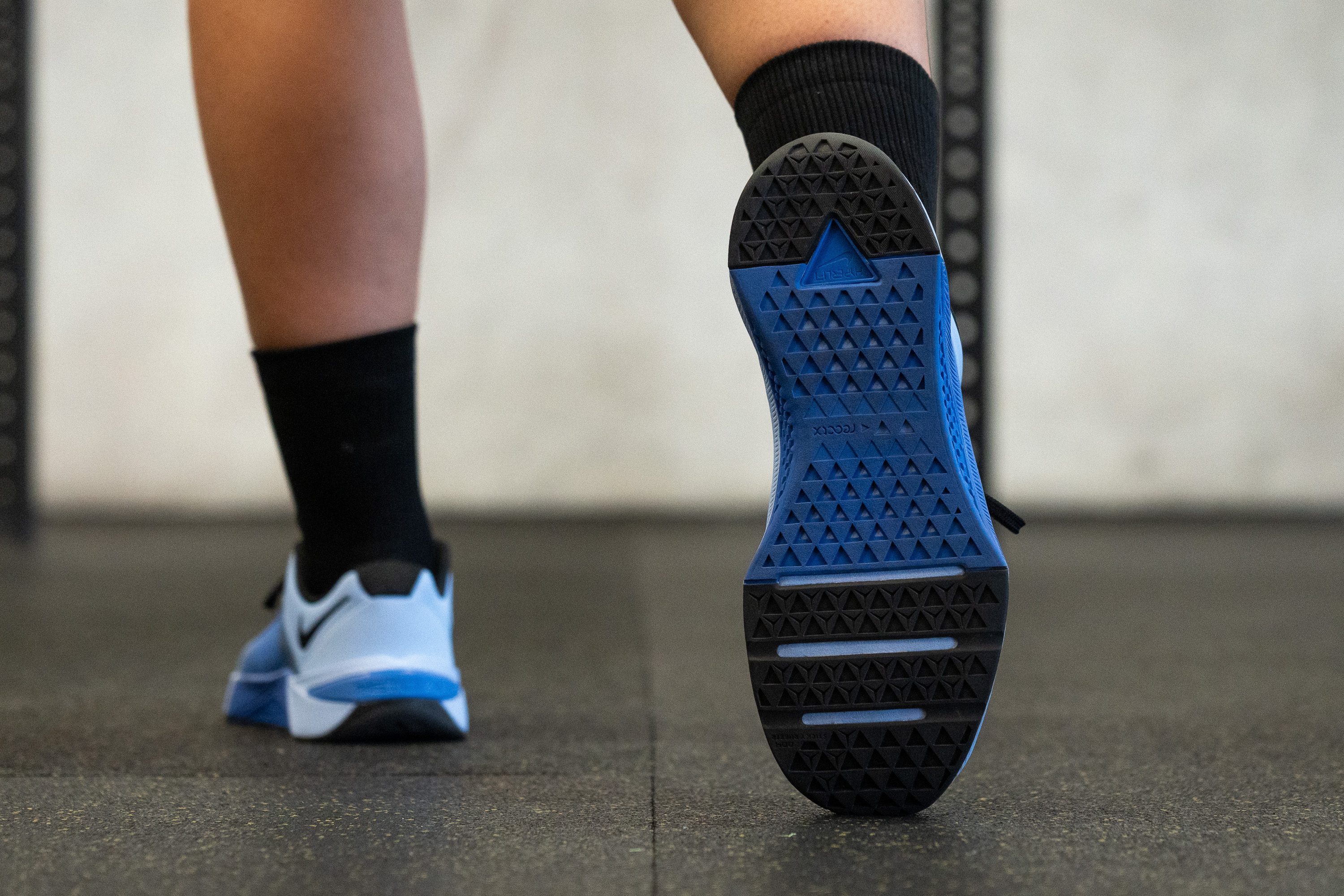
Flexibility / Stiffness
We've come to associate Nike Metcons with a highly stiff and unforgiving construction, which often gets in the way of performing non-lifting exercises that require foot bending (jumps, lunges, planks, agility, etc.). But this time around, it's not a traditional Metcon!
Measuring the amount of force it takes to bend the shoe by 30 degrees, we got a stunningly low reading of 9.2N! Believe it or not, but that's the flexibility level of the Nike Free Metcon 6 (9.0N)!
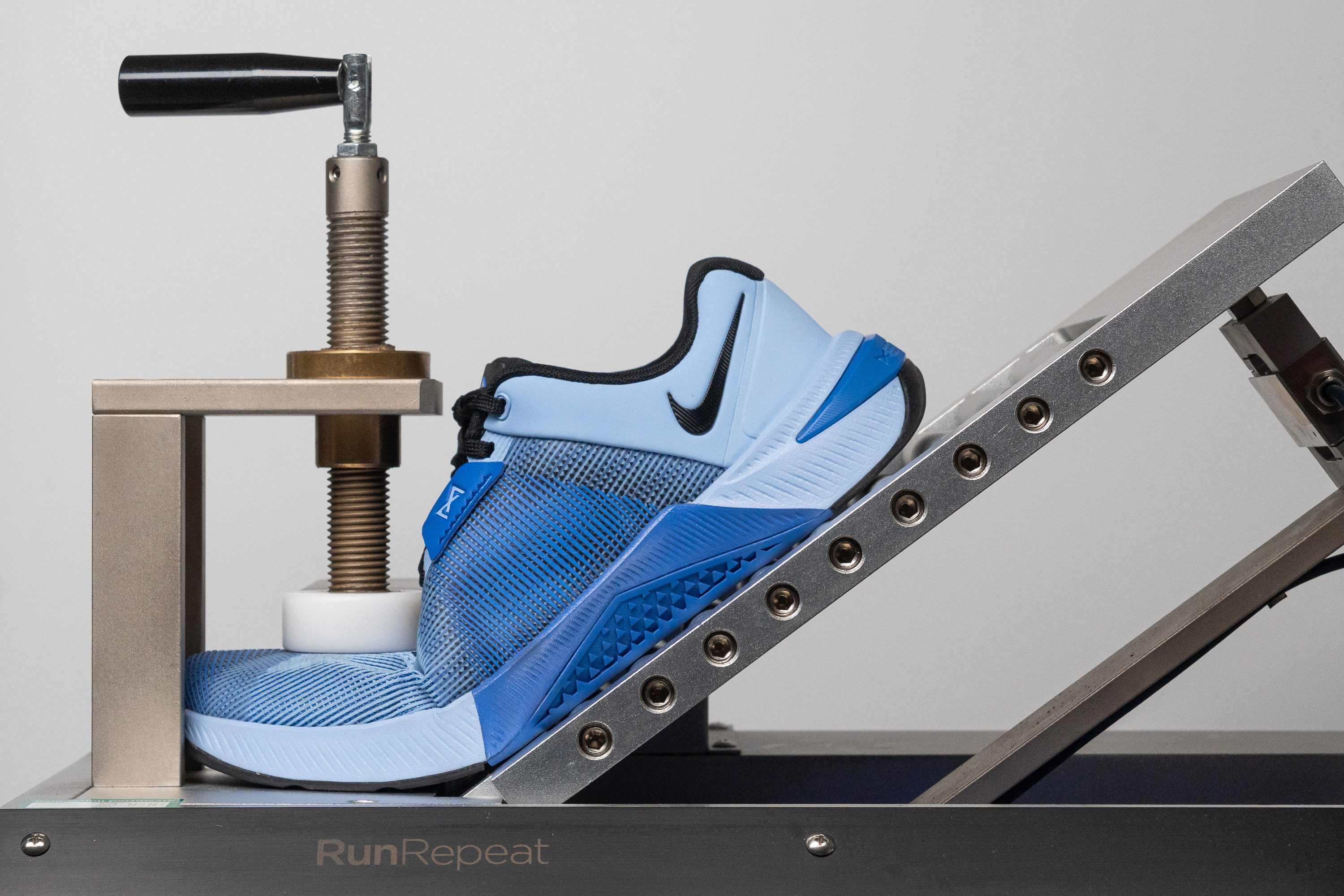
| Metcon 10 | 9.2N |
| Average | 10.1N |
Weight
But increased flexibility is not the only surprise that Nike throws at us in the new Metcon...The brand just slashed 2.3 oz off the past version!
The Metcon 10's weight clocks in at only 11.0 oz (312g) in a men's US size 9, making it lighter than the Reebok Nanos! Gone are the burly rubber wraps and the clunky TPU heel design. It looks like Nike has fine-tuned each component to make the overall construction as light as possible without compromising performance.
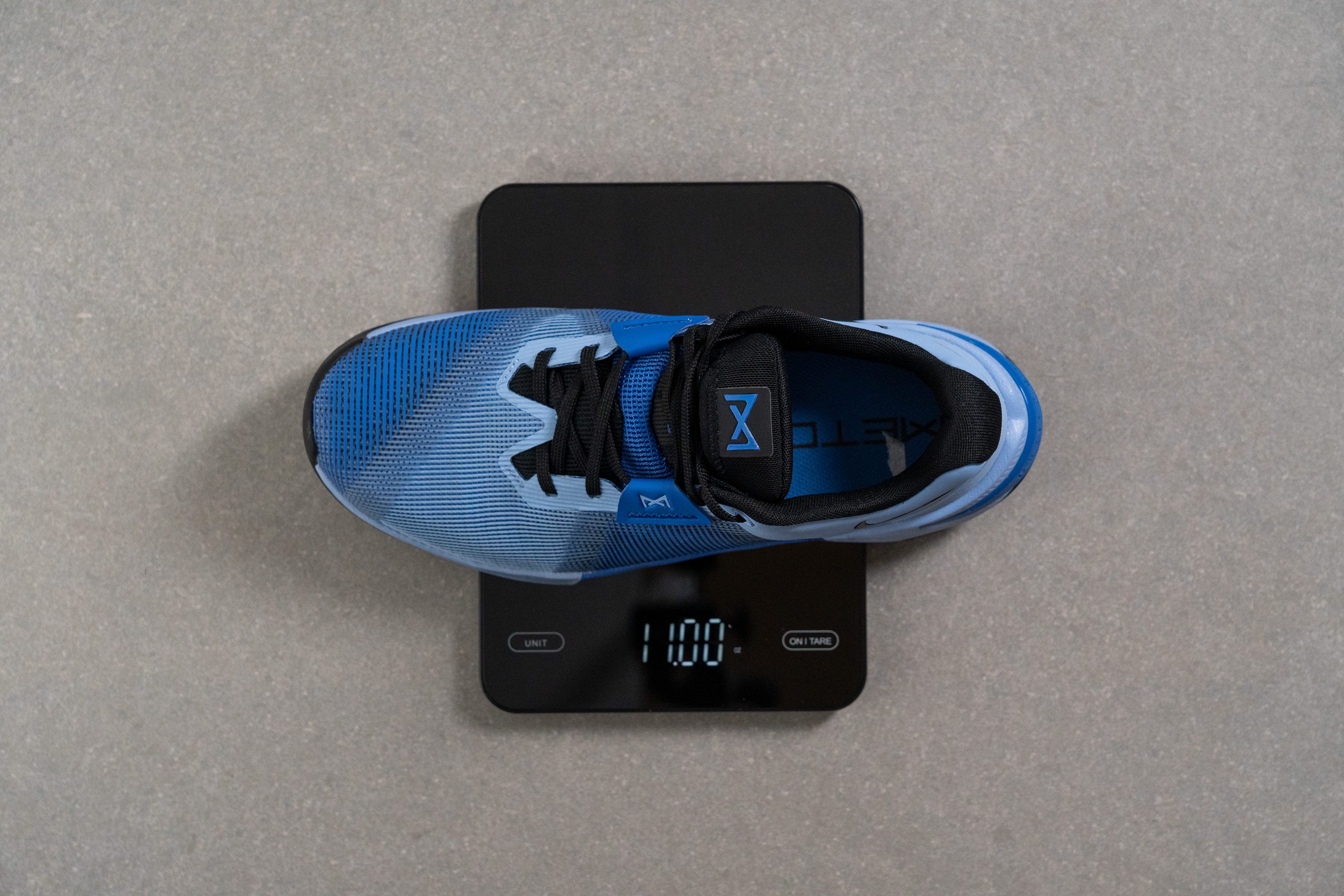
| Metcon 10 | 11.0 oz (312g) |
| Average | 10.8 oz (306g) |
Breathability
Even though it seems like the shoe's upper is entirely made of mesh, an upclose examination revealed that the textile is fused with rubber in the strategic areas for durability.
This makes some areas thicker than others, resulting in a somewhat zonal breathability.
You can see how the more aerated mesh zone meets the reinforced rubberized one in our microscope shot below.
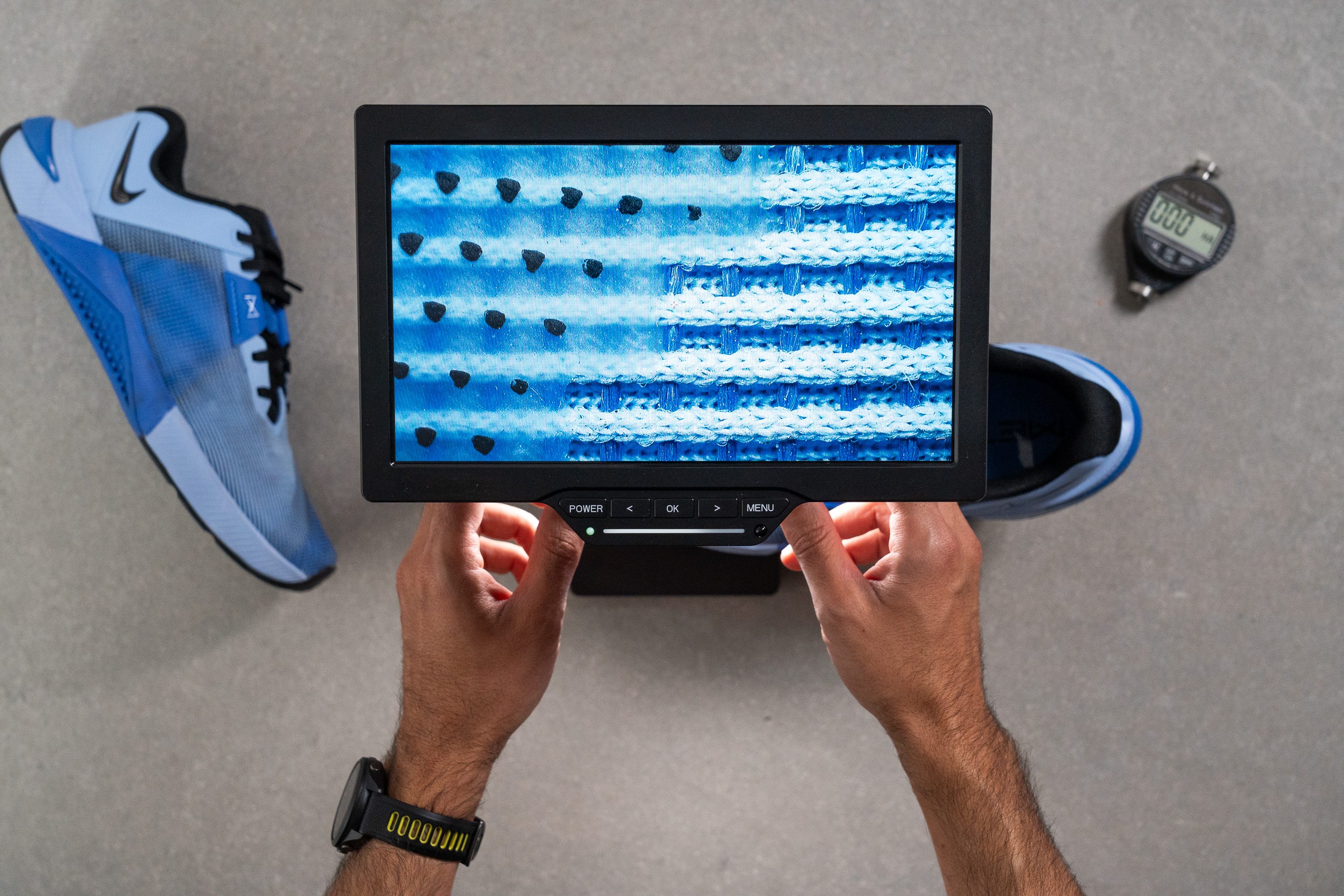
Unfortunately, the shoe's overall airflow left us wishing for more, even compared to the previous version. That's why we had to lower our breathability score to only 2 out of 5. Not the best option for sweltering gyms.
| Metcon 10 | 2 |
| Average | 3.6 |
Stability
Lateral stability test
The Nike Metcon's signature stability continues to run the show in the v10. Sturdy, planted, and rigid in the right places, the shoe allows no wobbling at all.
From the ground up, it's packed with stabilizing features, offering the best possible power transfer for lifting and strength training in a cross-trainer.
The Metcon 10 inherits the stiff TPU Hyperlift insert we've seen in the previous versions, but it's been reduced to the smallest possible size without affecting stability.
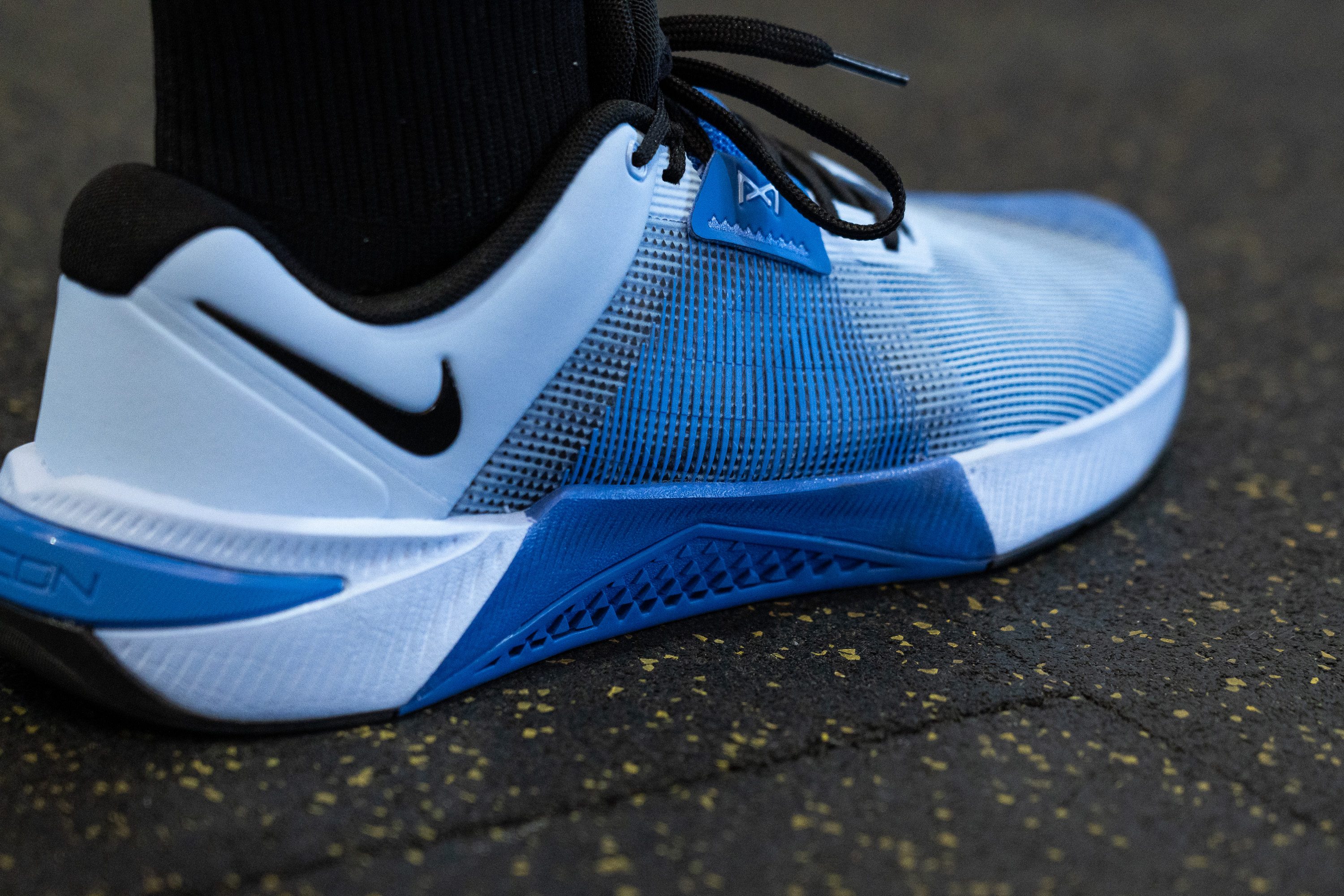
The polarizing rubber wraps of the v9 have been replaced with rubberized mesh, an internal midfoot band, and a strong pair of synthetic eyelets, all of which work together for a locked-in fit.
The midfoot rubber also remained on both sides of the shoe's midsole, but it received a more streamlined and aesthetic look.
Torsional rigidity
Fair enough, the Nike Metcon 10's torsional rigidity lost one point in our manual test, dropping down to 4 out of 5 on a stiffness scale.
But is that a problem? We don't think so because the shoe can still handle heavier loads without a problem, while the increased forefoot flexibility makes it more versatile for all-around use.
| Metcon 10 | 4 |
| Average | 2.8 |
Heel counter stiffness
Another manual test confirmed that the shoe's heel counter remains rigid and solid, earning a high stiffness score of 4 out of 5.
There is just a tiny bit of give that prevents the heel area from feeling too harsh against the ankle and Achilles.
| Metcon 10 | 4 |
| Average | 2.7 |
Midsole width - forefoot
Measuring the shoe's midsole dimensions, our caliper revealed that the Metcon 10 has undergone some changes in the heel but not in the forefoot.
The outrigger is still present here, resulting in a wide reading of 115.2 mm in the broadest area. Wider than average, it minimizes the risk of foot rolling during forceful lateral movements or when picking up heavier weight.
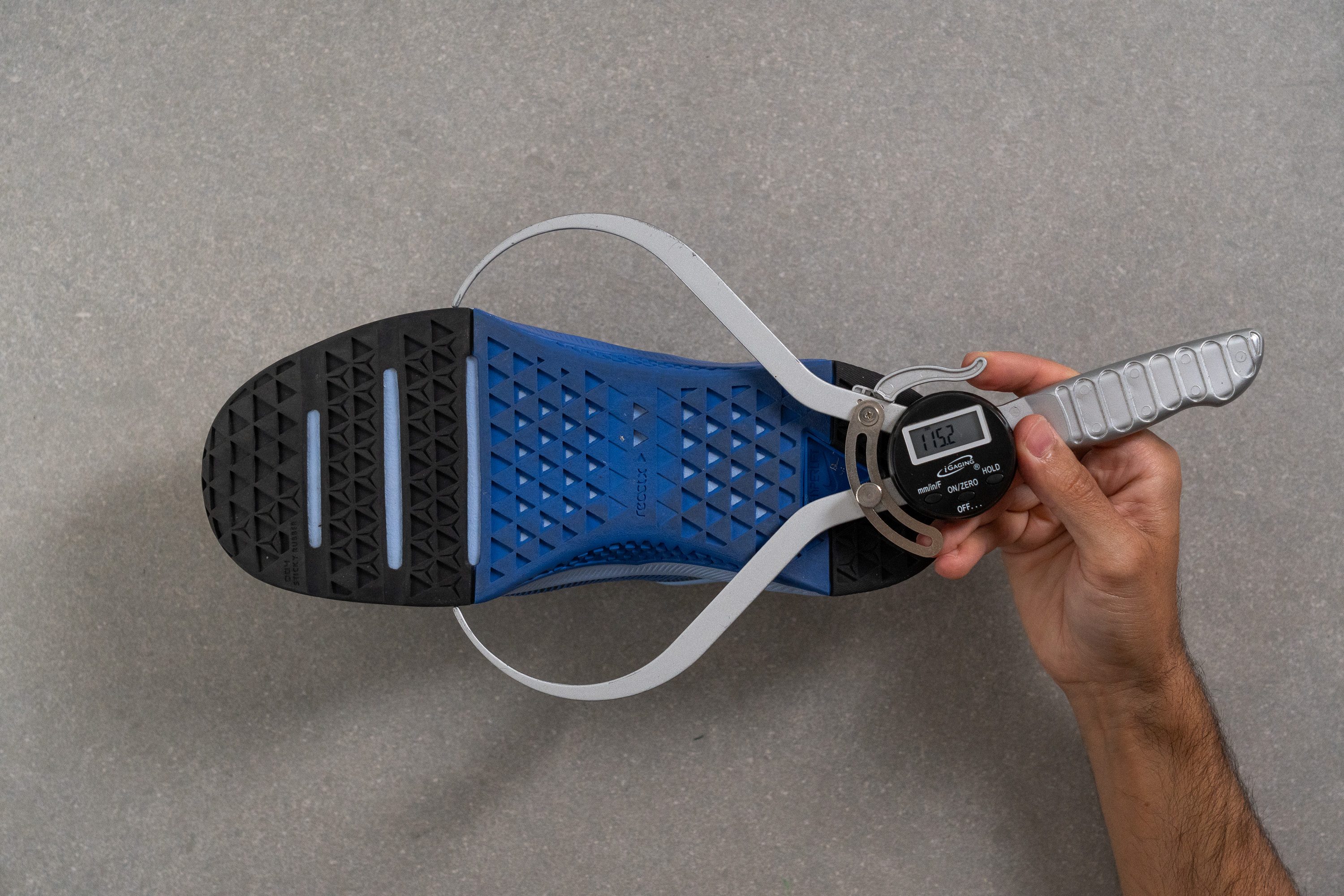
| Metcon 10 | 115.2 mm |
| Average | 110.8 mm |
Midsole width - heel
The heel, on the other hand, shrank by 4.2 mm, showing 90.8 mm in its broadest part.
We believe that it was a smart update as the shoe lost the unnecessary bulk while remaining adequately stable for a cross-training shoe. In fact, even advanced lifting shoes typically have a heel width of 85-90 mm.
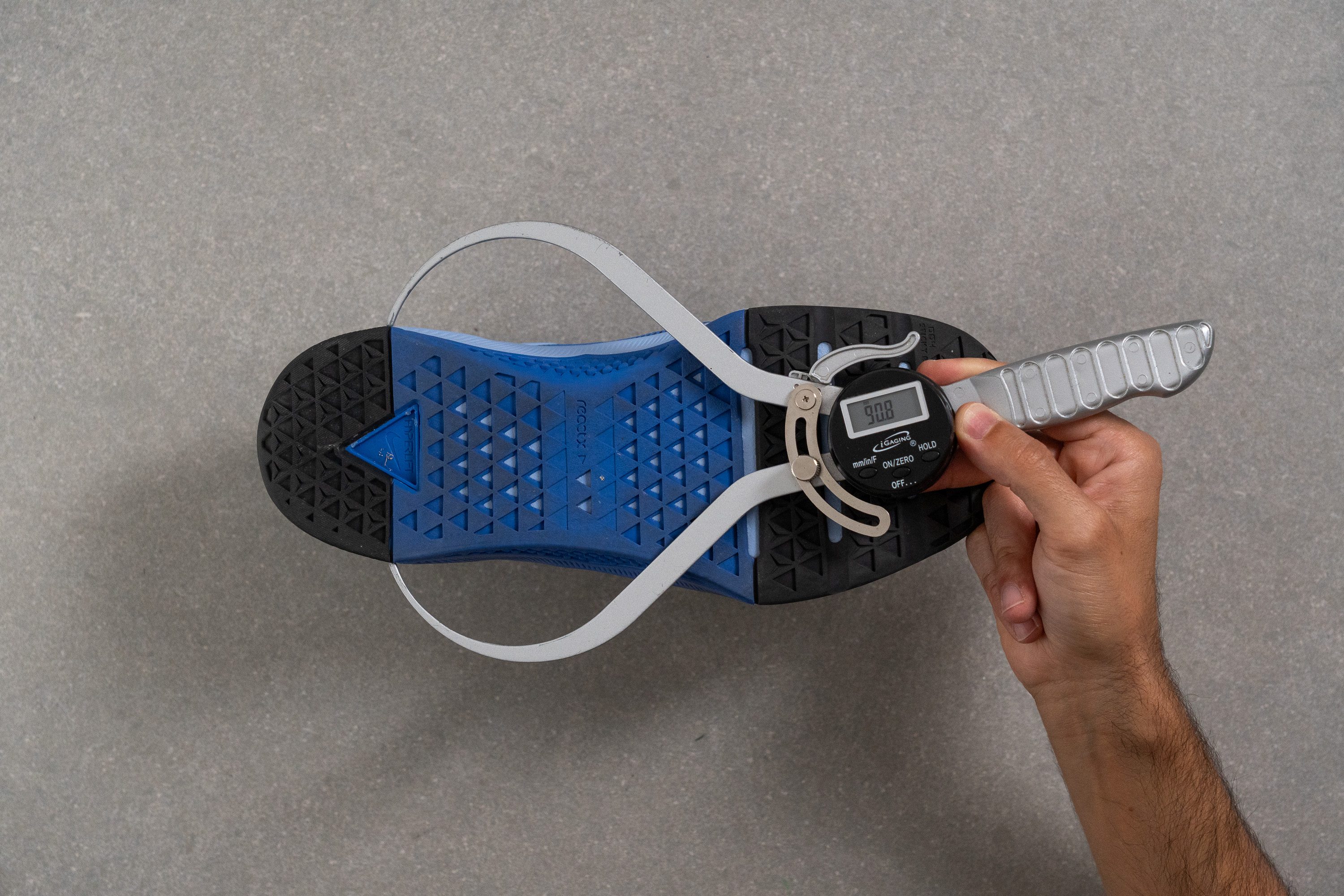
| Metcon 10 | 90.8 mm |
| Average | 87.1 mm |
Durability
Toebox durability
Rope climbs, contact with abrasive gym surfaces, and regular intense use of the shoe all put its upper durability to a serious test. But there is a good reason why the Metcon is Nike's flagship training shoe!
Even though it doesn't have any thick synthetic overlays, the Metcon 10's rubberized mesh resisted our Dremel test marvelously. The tool only damaged the shoe's topmost upper layer, while the rest of the material remained intact. This convinced us to rate its toebox durability with a high score of 4 out of 5.
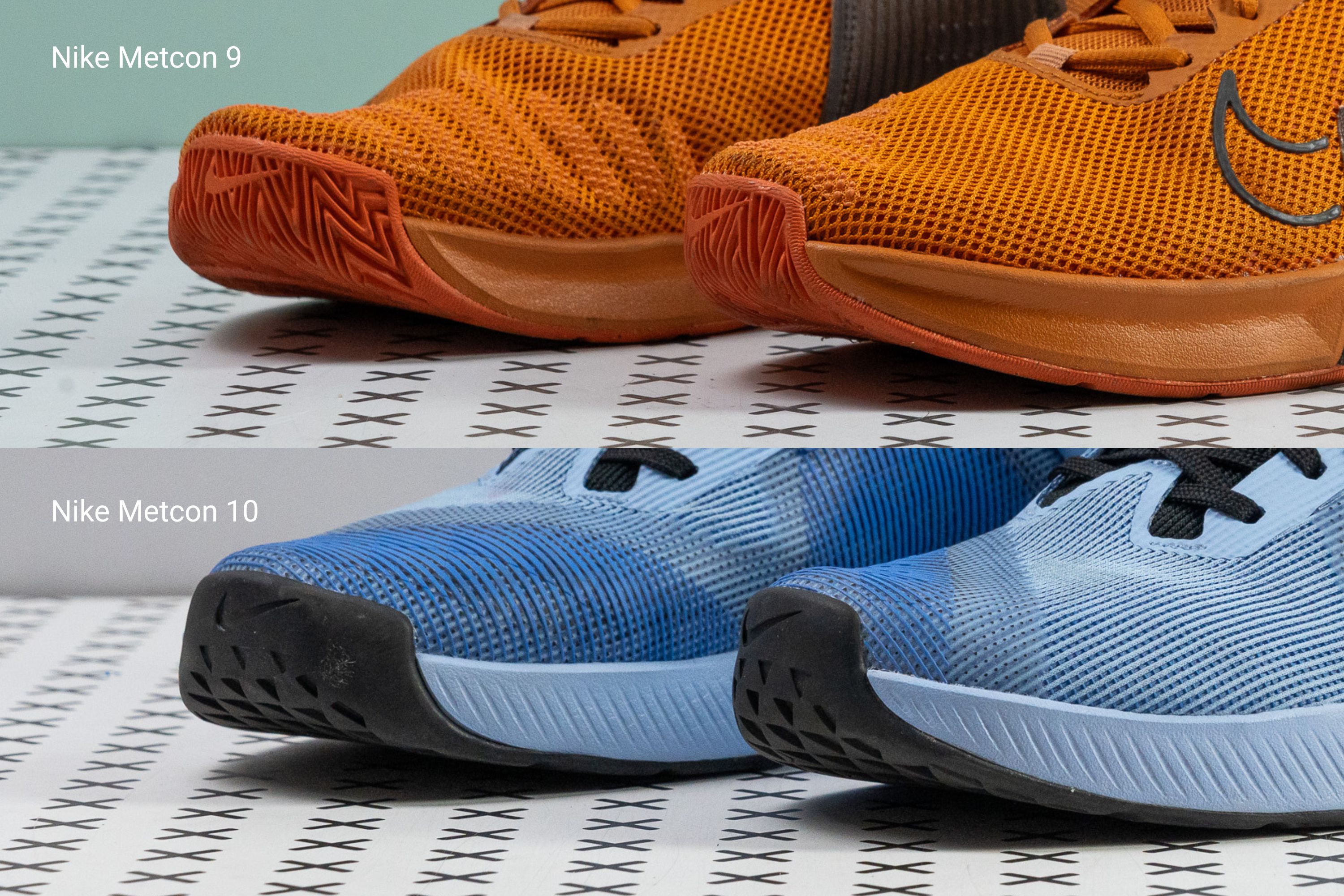
And if you loved the extended toe bumper of the Metcon 9, you will be treated to the same protection in the Metcon 10. Ideal for burpees!
| Metcon 10 | 4 |
| Average | 2.5 |
Heel padding durability
We were also pleased to find that Nike didn't skimp on the Metcon 10's interior durability.
The Dremel did very minor damage to the inner lining of the shoe's heel collar (aka heel padding), convincing us to rate its durability with a high score as well - 4 out of 5.
| Metcon 10 | 4 |
| Average | 2.7 |
Outsole durability
Because the Nike Metcon 10 employs two types of outsole rubber, we repeated the Dremel test for each blend as well.
First, the midfoot (blue) rubber.
Because it is expected to get damaged by rope climbs the most, we were hoping for a solid abrasion resistance here. But the tool bit rather deeply into the material, and the dent turned out to be 1.22 mm deep. While it's not a bad result per se, it proved to be no better than the average either.
Second, the heel and forefoot (black) Sticky Rubber.
Our test showed that this compound wasn't much better than the other one, developing a dent of 1.12 mm. This is, again, on par with the category average, and we expected stronger results from Nike's best training shoe.
We highly recommend limiting the shoe's use to the gym/indoor venues if you hope to get as much lifespan from it as possible.
| Metcon 10 | 1.2 mm |
| Average | 1.1 mm |
Outsole thickness
At least the shoe packs a decent amount of outsole rubber with a thickness of 2.9 mm, which also promises an average lifespan.
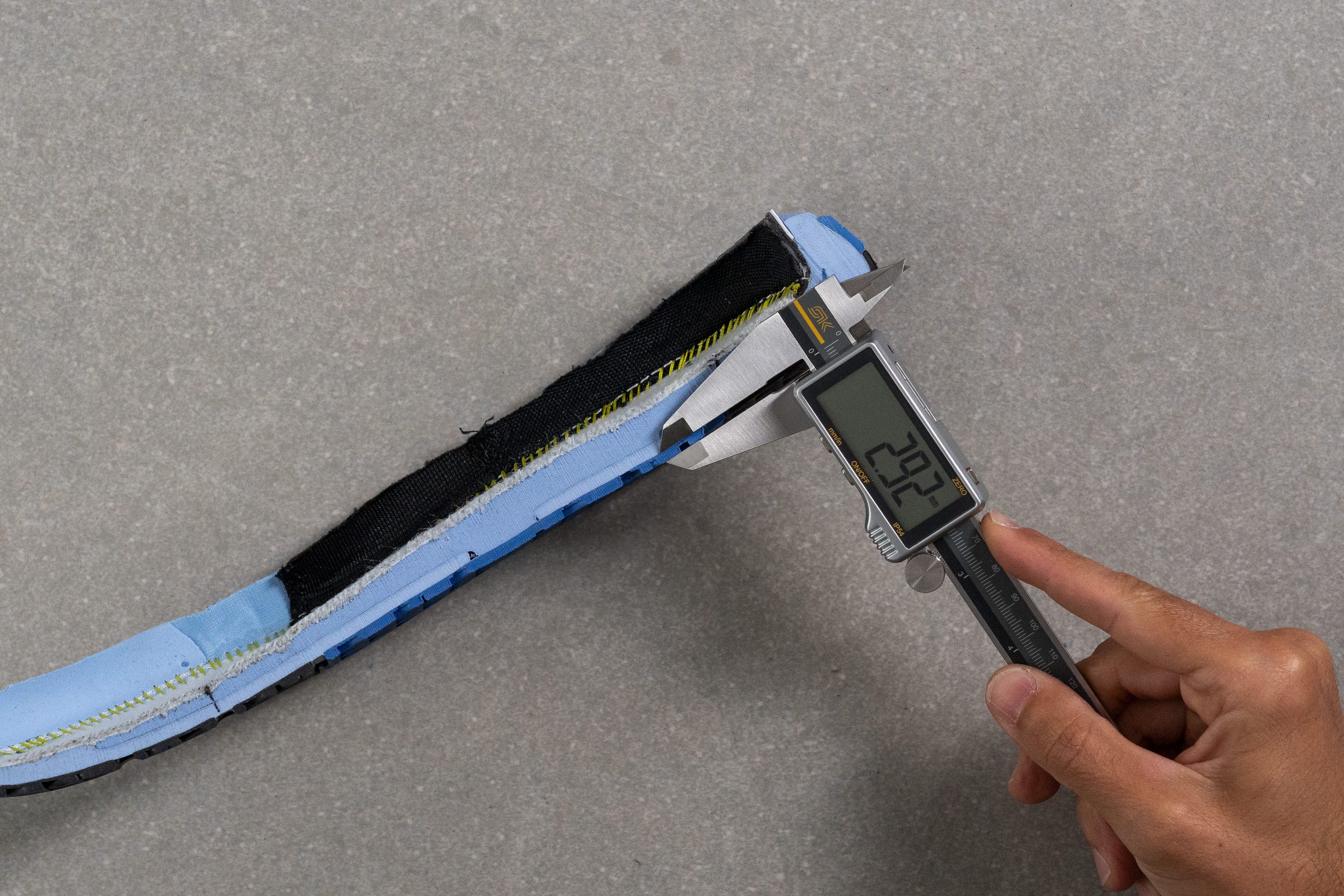
| Metcon 10 | 2.9 mm |
| Average | 3.6 mm |
Misc
Insole thickness
The Nike Metcon 10 is equipped with a standard amount of insole padding. Our caliper measured its thickness at 3.6 mm.
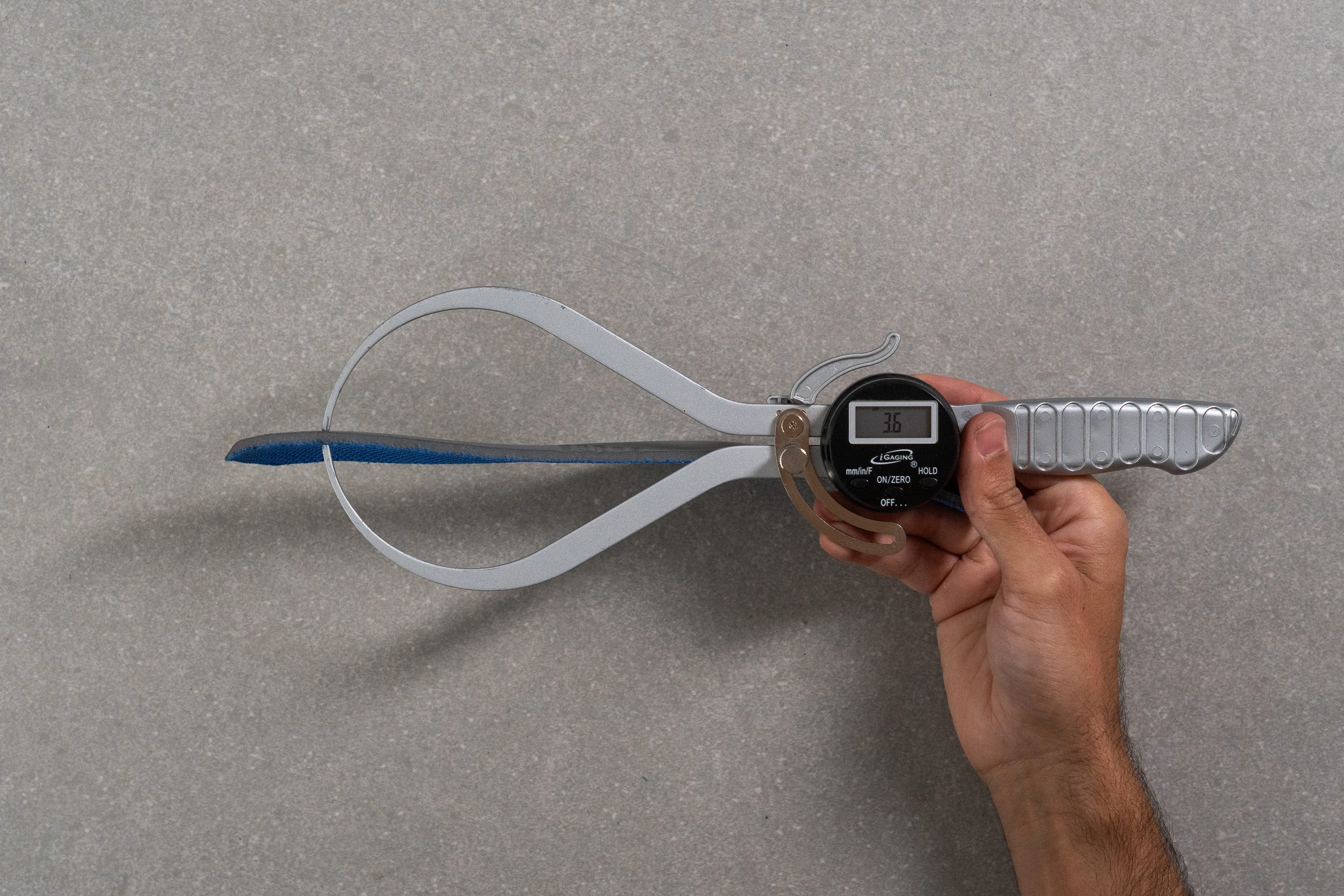
| Metcon 10 | 3.6 mm |
| Average | 4.0 mm |
Removable insole
The shoe's insole is easily removable in case you want to dial up or down on underfoot padding or arch support.
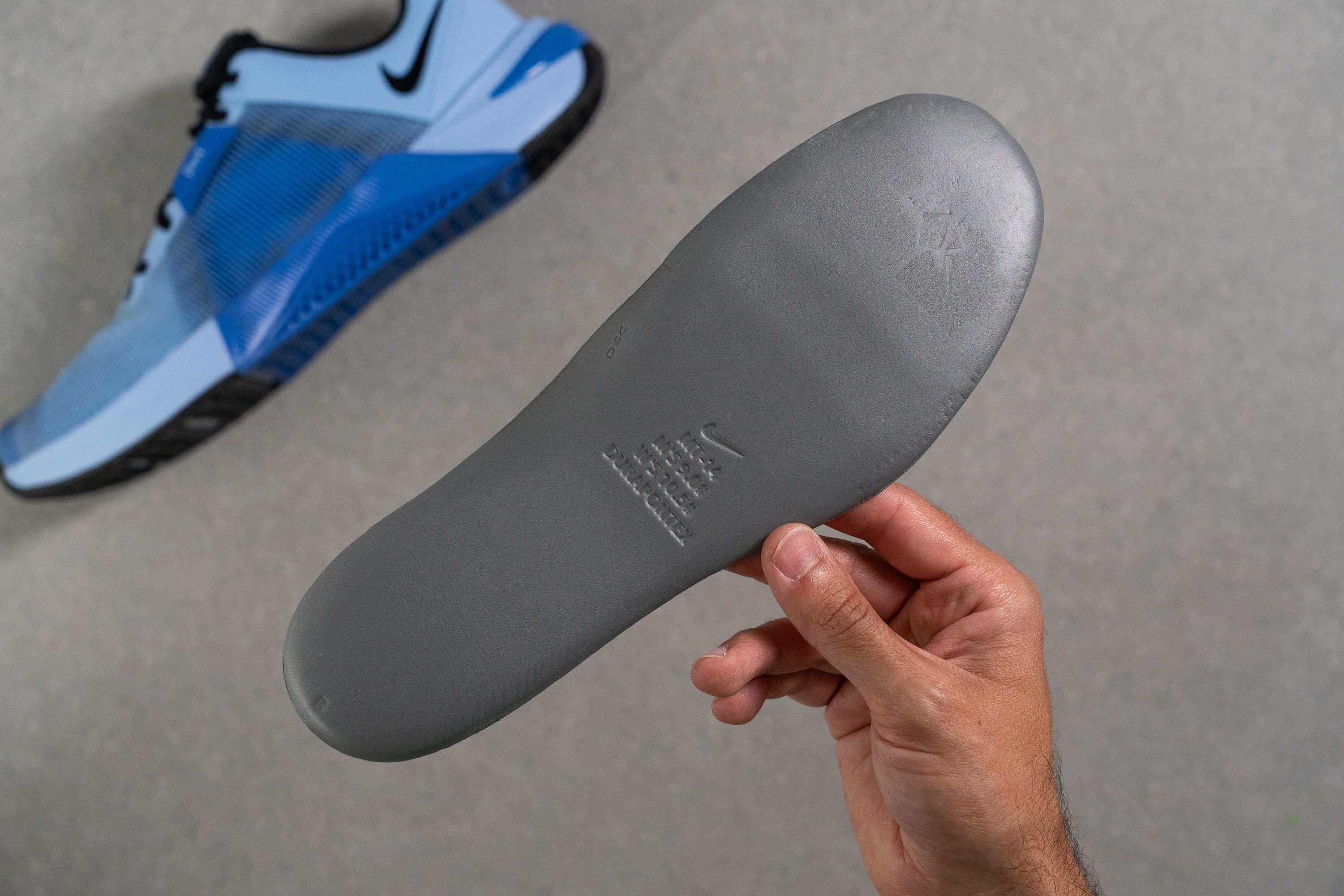
| Metcon 10 | Yes |
Tongue padding
The shoe's interiors are lined with a decent amount of foam padding, which is neither too thin nor excessive.
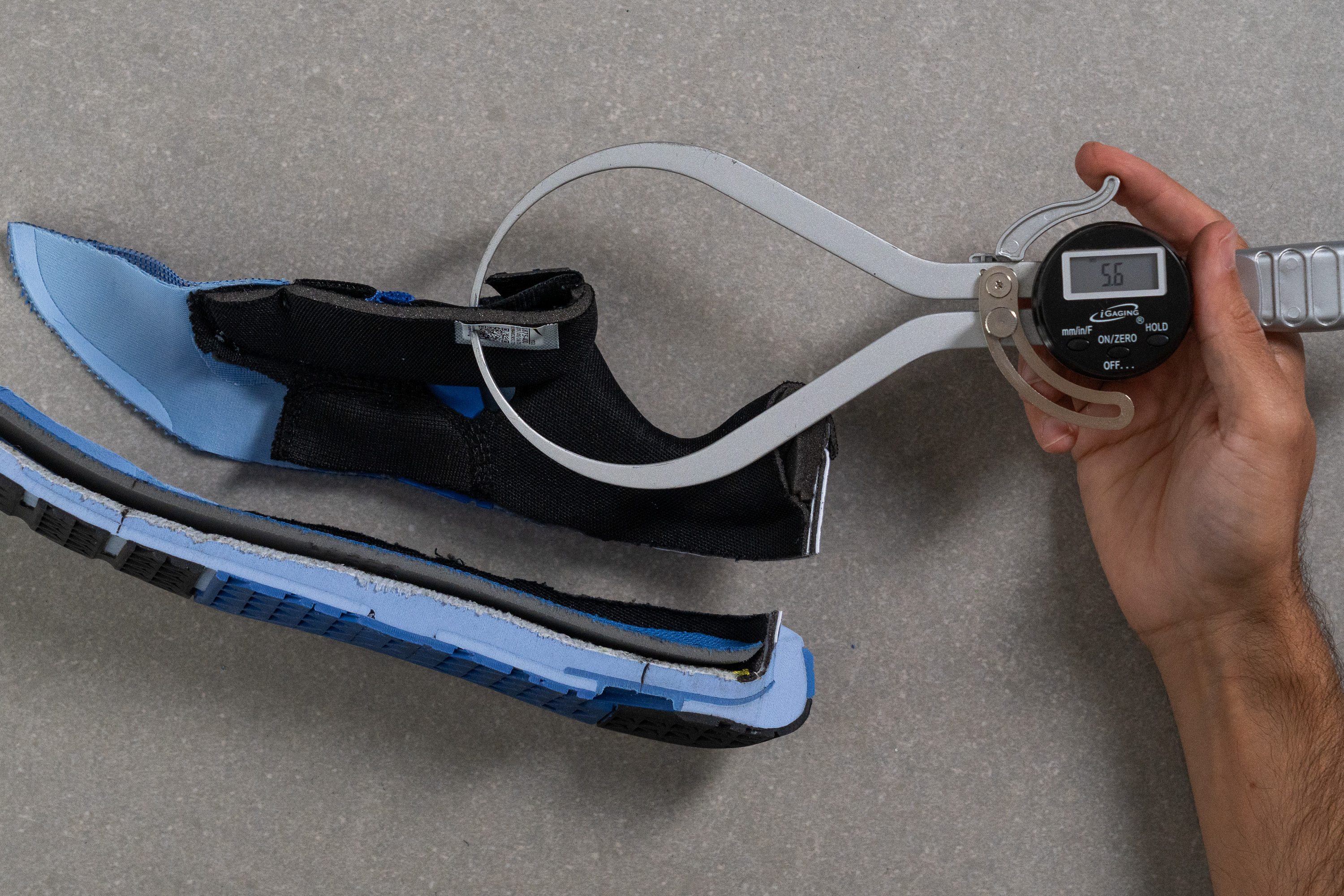
| Metcon 10 | 5.6 mm |
| Average | 5.5 mm |
Heel tab
The Metcon 10 is easy to get on and off, even without a finger loop. This is thanks to its stiff and structured heel counter, which is also slightly lower set compared to the v9.
But the shoe offers another bonus in the form of a stiff plastic heel clip, which accommodates handstand push-ups against the wall.
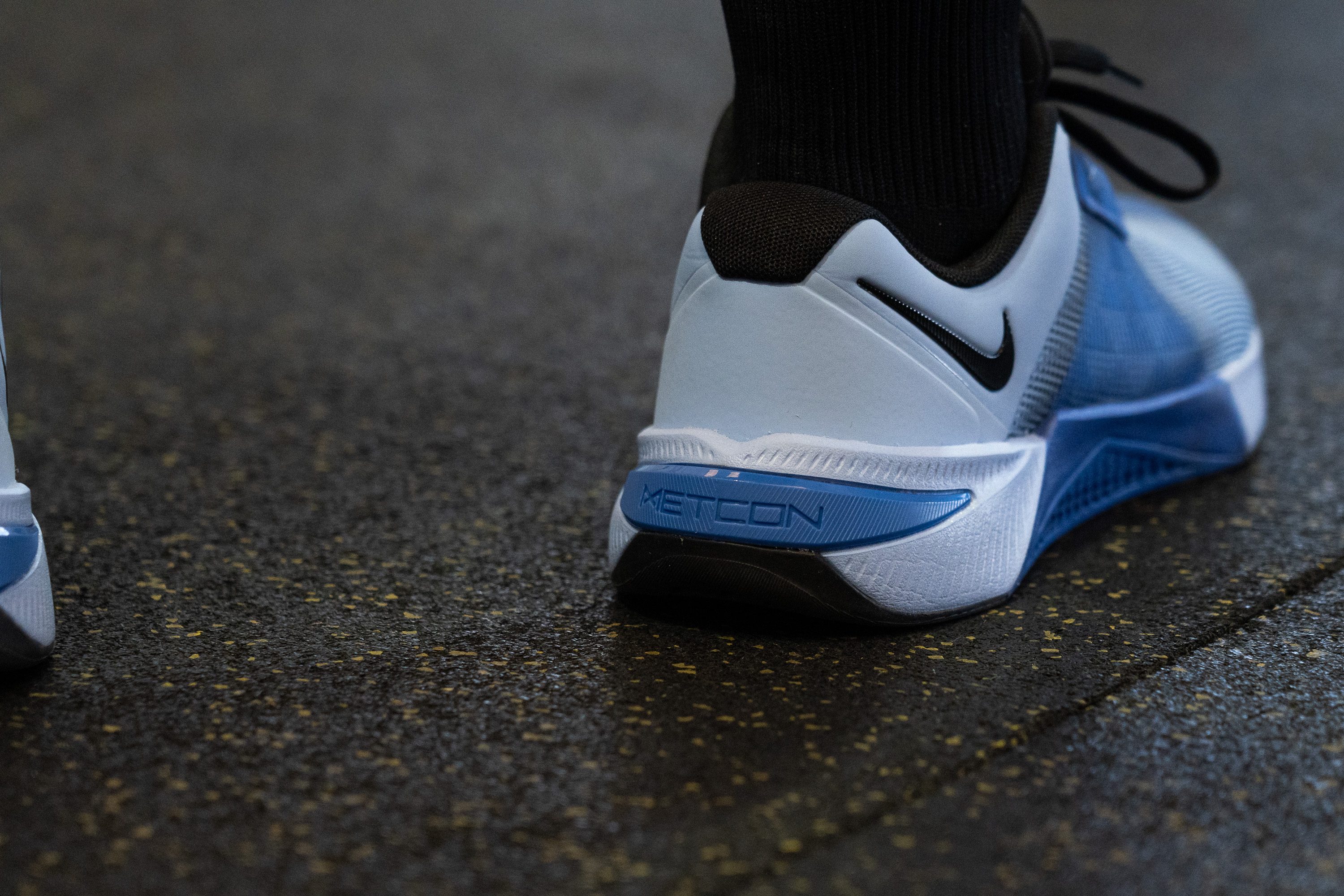
| Metcon 10 | None |
Tongue: gusset type
Just like the previous Metcon, this version has a semi-gusseted tongue, which keeps it attached to the rest of the upper. Tongue shifting is thus eliminated, and the lockdown feels more secure.
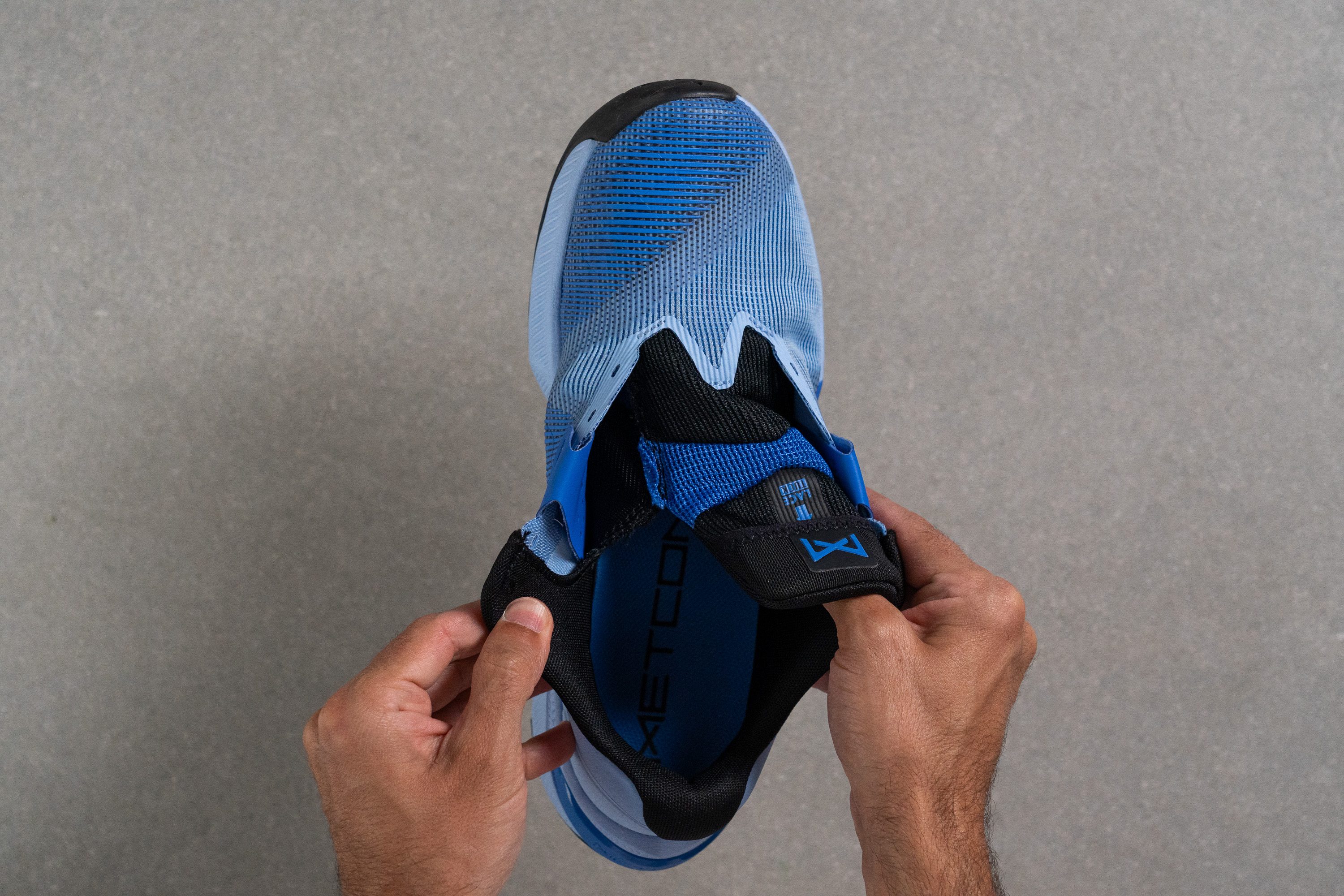
| Metcon 10 | Both sides (semi) |
Price
Even though it's been two years since the previous iteration, we are glad that Nike only upped the MSRP by $5. Even though it's the brand's leading cross-trainer, its price remains competitive with similar models and relatively affordable for many gym goers and Crossfitters.
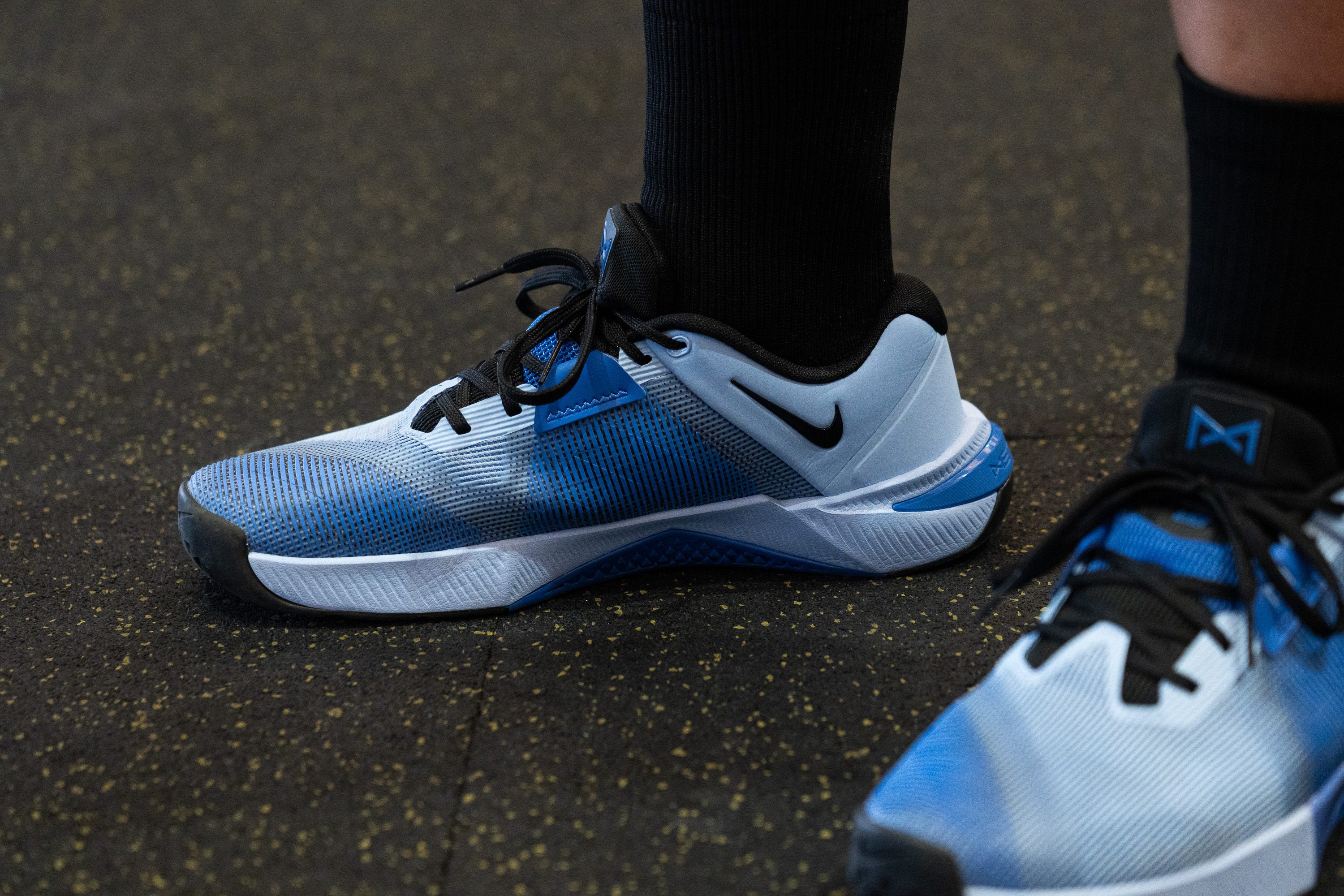
| Metcon 10 | $155 |
| Average | $123 |
Lace tuck
The new Lace Tuck feature replaced the earlier Lace Lock in the new Metcon 10. We found it more handy and neat because excess laces are no longer left dangling on the sides.
